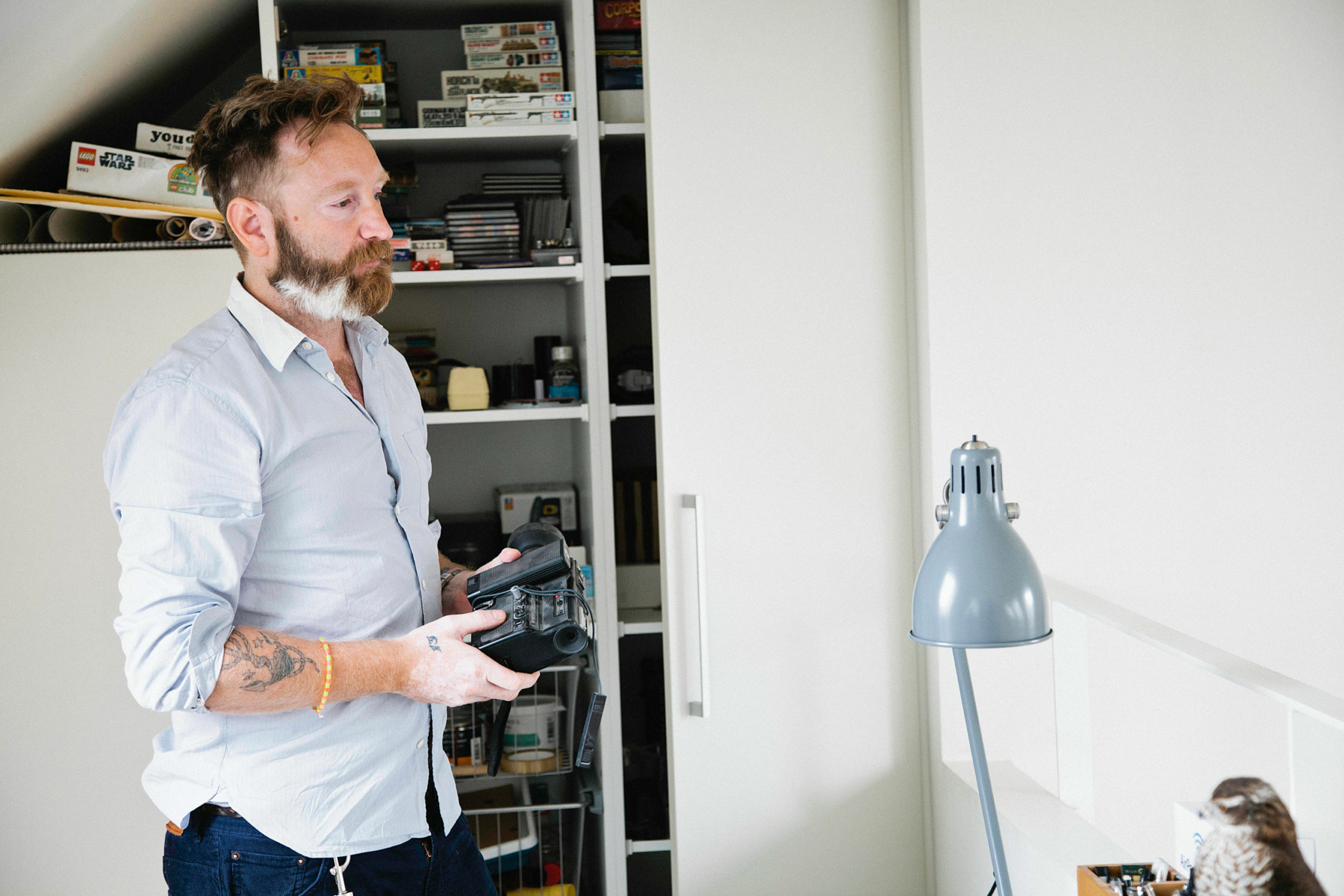Tomas Skoging’s favorite aspect of his home is the height of the ceilings and the light that floods into its interior that he shares with his two young children, Isadora and Billy. As the founder of ACNE, Tomas’ current life seems a far cry from his situation in 1996: Having left his normal job, Tomas and three friends took the risk and rented an expensive office.
Without any future certainties they developed an advertising agency, humbly planting the seed and myth surrounding the brand. Over fifteen years later the business has gone from strength to strength and the journey continues. Today the company embodies many things: a production agency, television, film, video games, fashion and specialized products in which art and industry meet. Pushing the business further is on Tomas’ mind as he continues to think big and work toward expanding the company’s portfolio.
Sitting among children’s toys and drawings, works in progress and a wall of books, we discuss Tomas’ love of film and video games, his ongoing reference library – a soup of inspiration – and family life.
This story is featured in our second book, Freunde von Freunden: Friends, order within Germany here, or find the book internationally at selected retailers.
This portrait is part of a series with Vitra. Visit Vitra Magazine to delve deeper into specific design pieces and individual interior concepts.
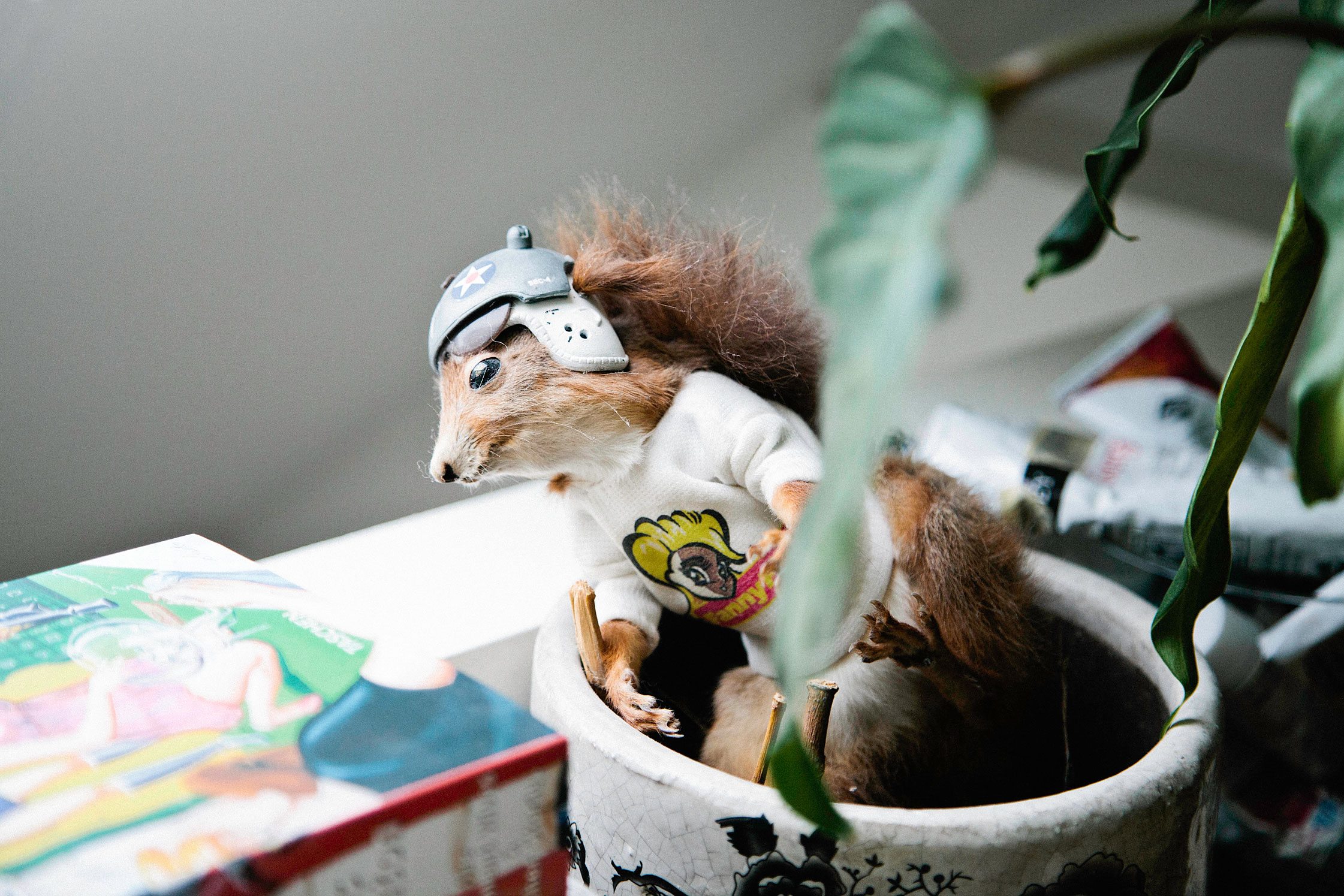
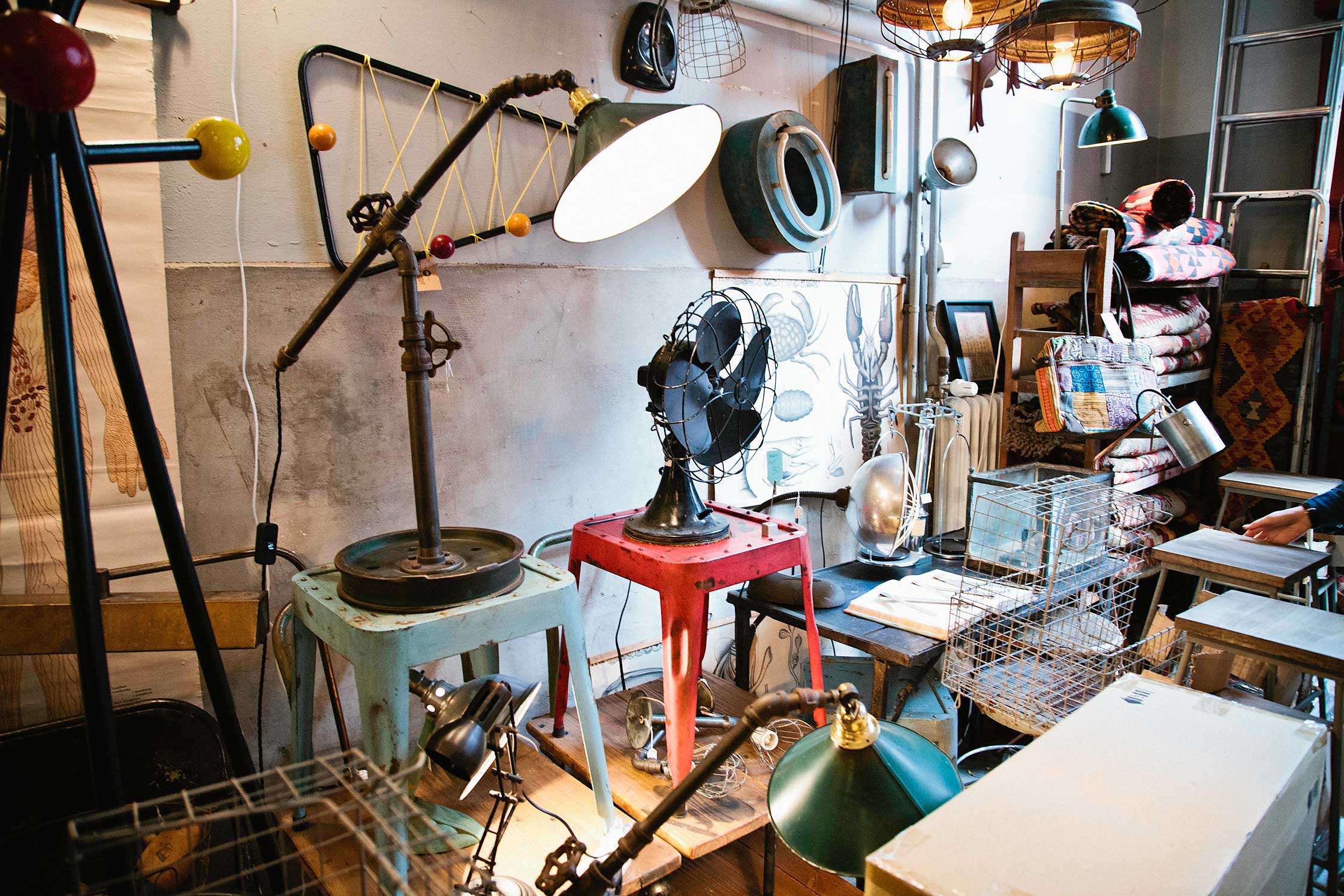
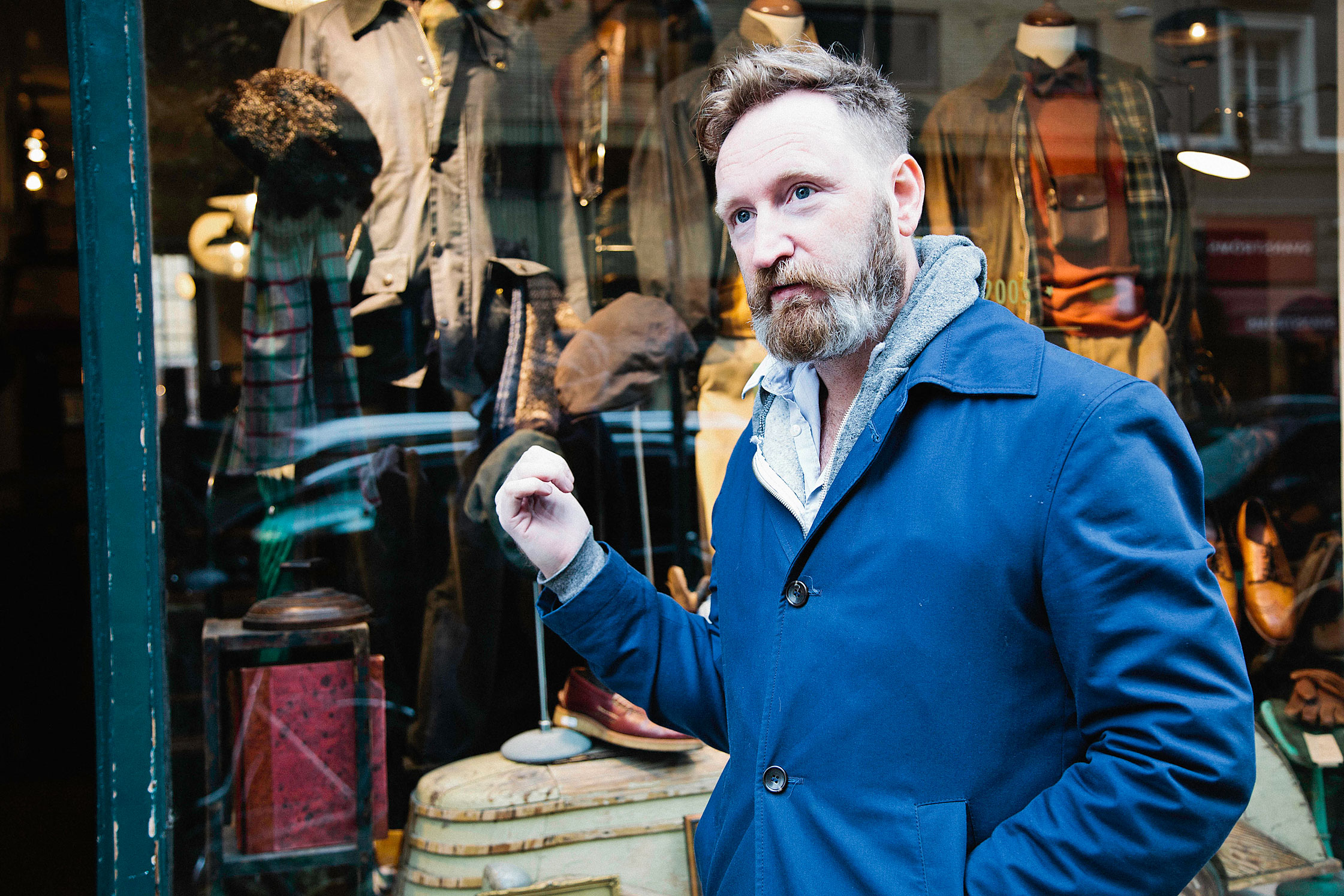
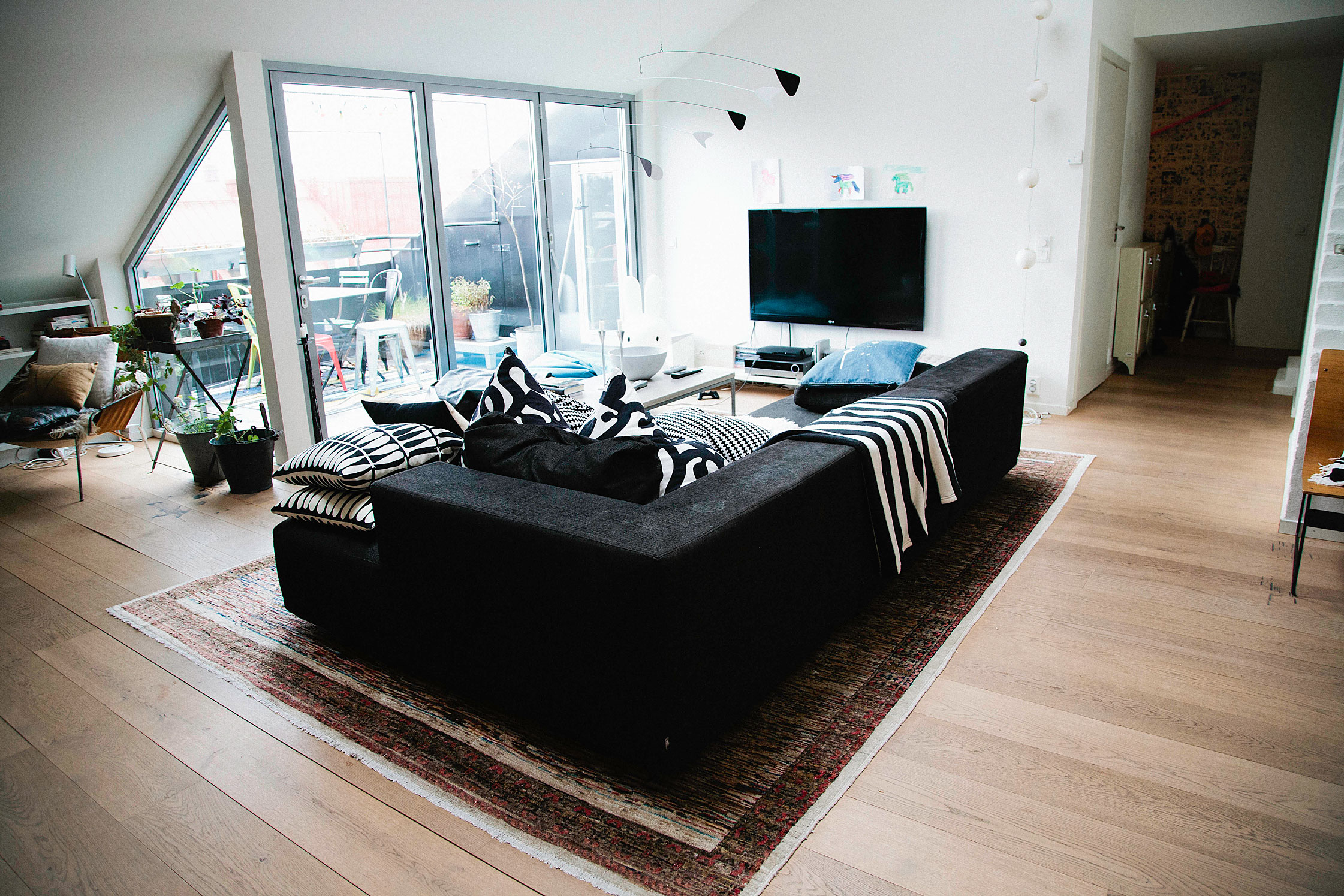
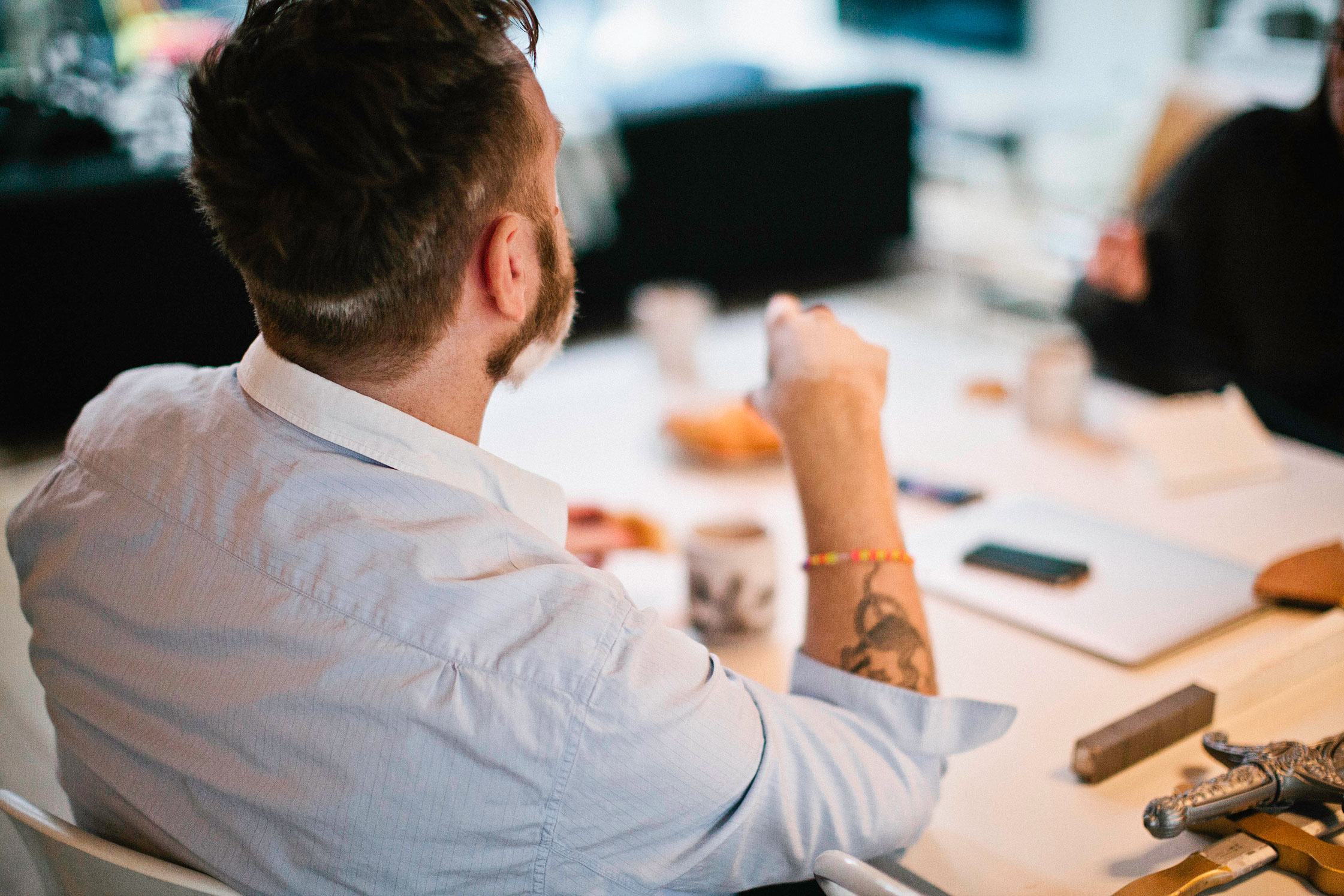
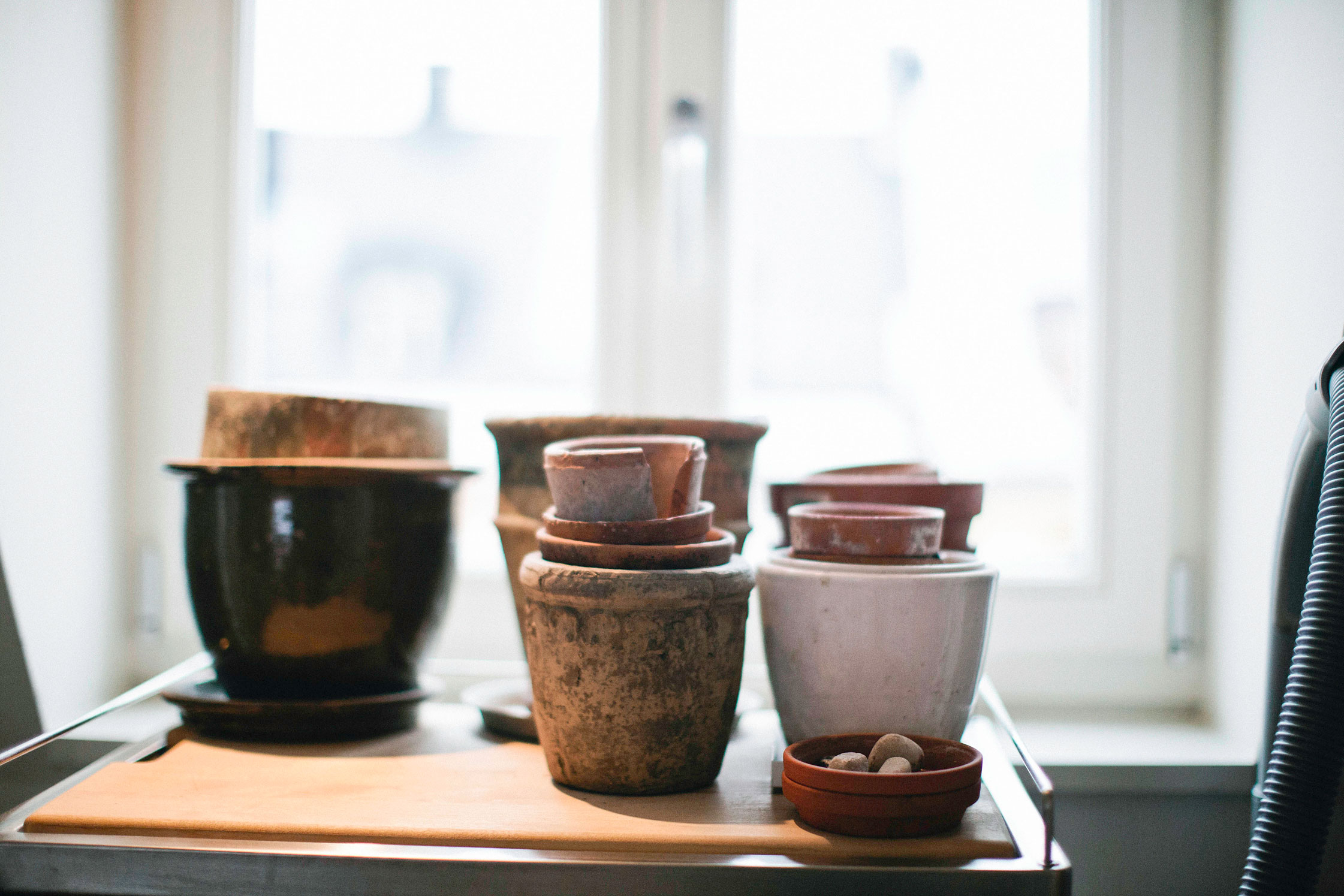
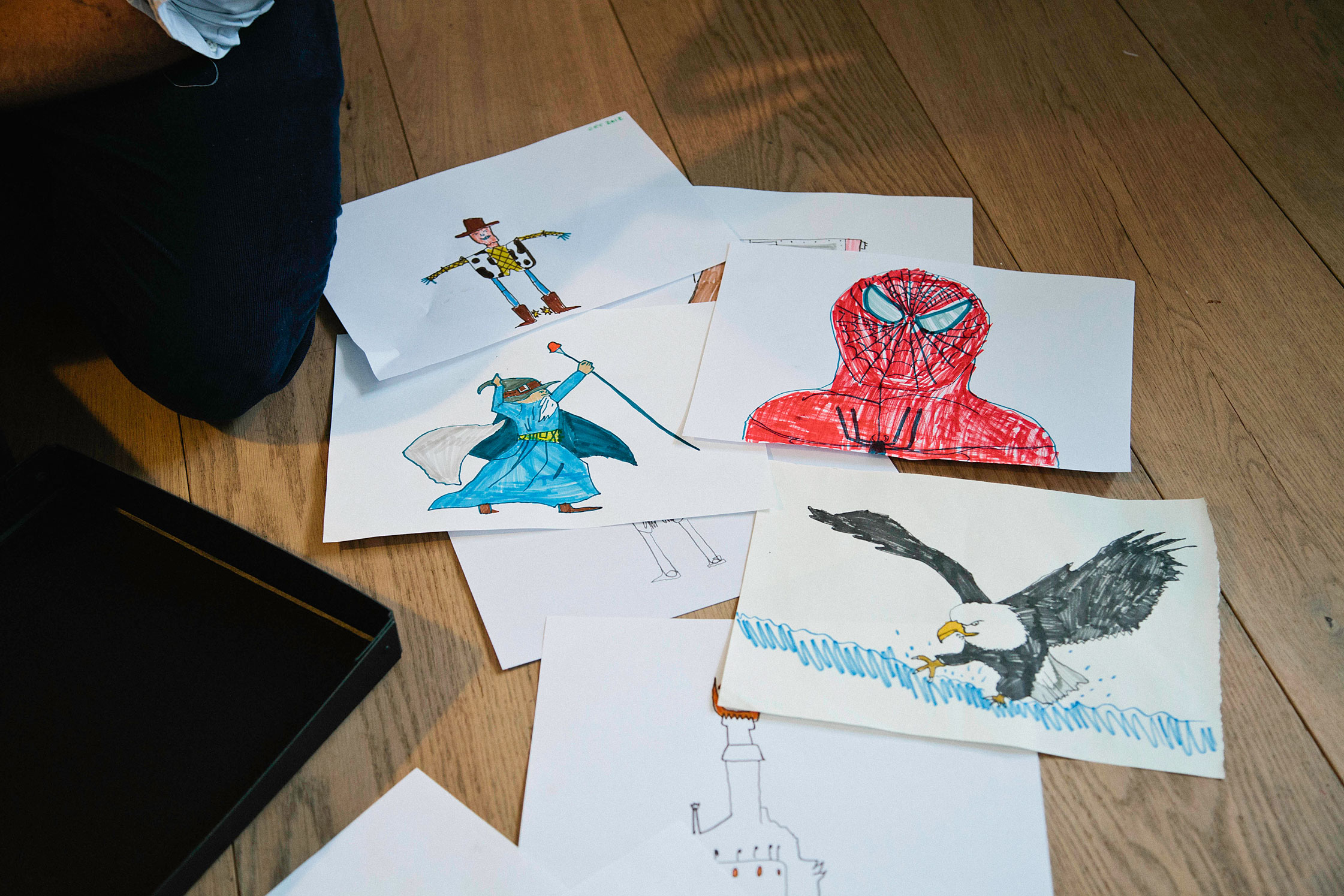
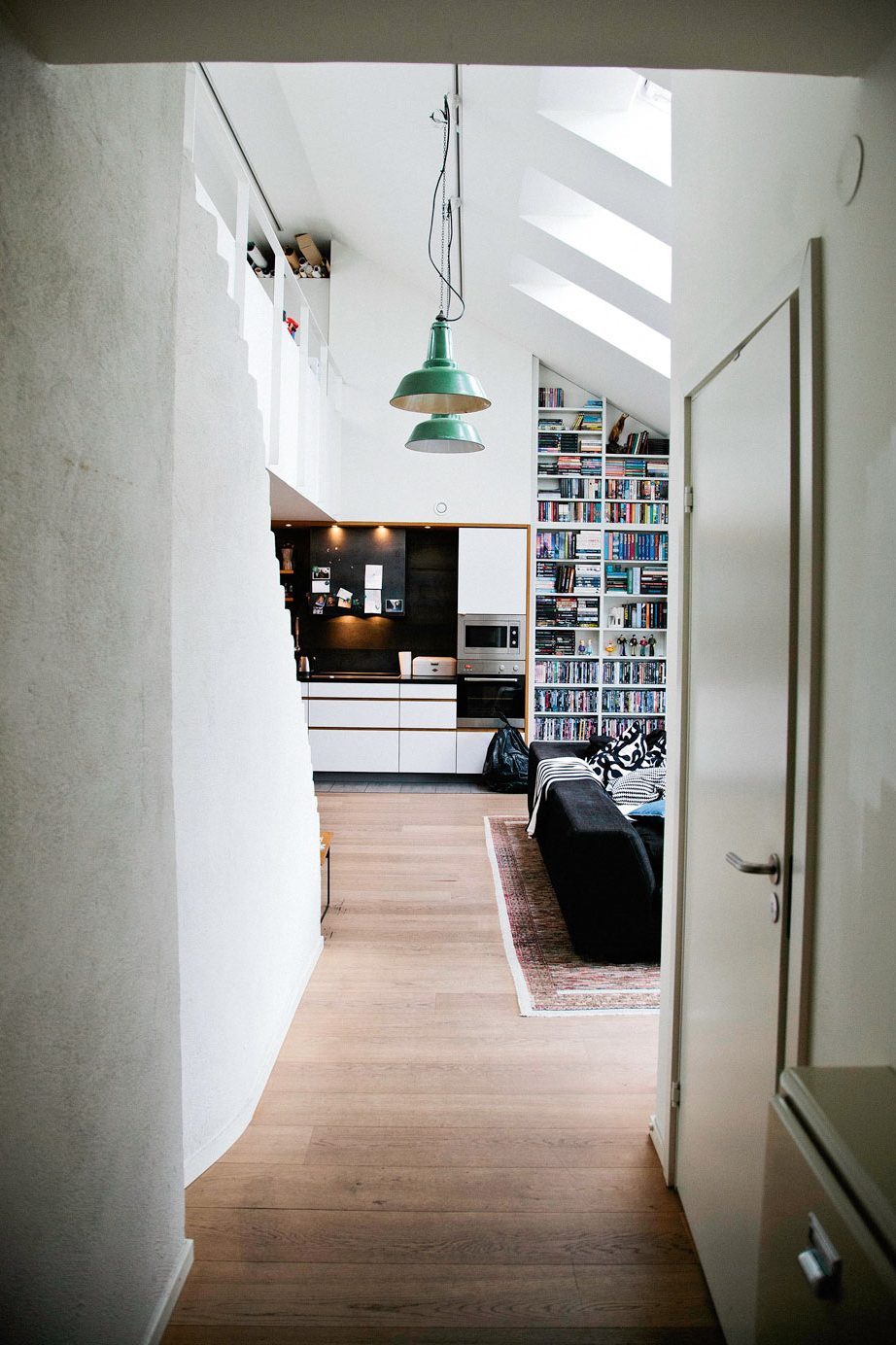
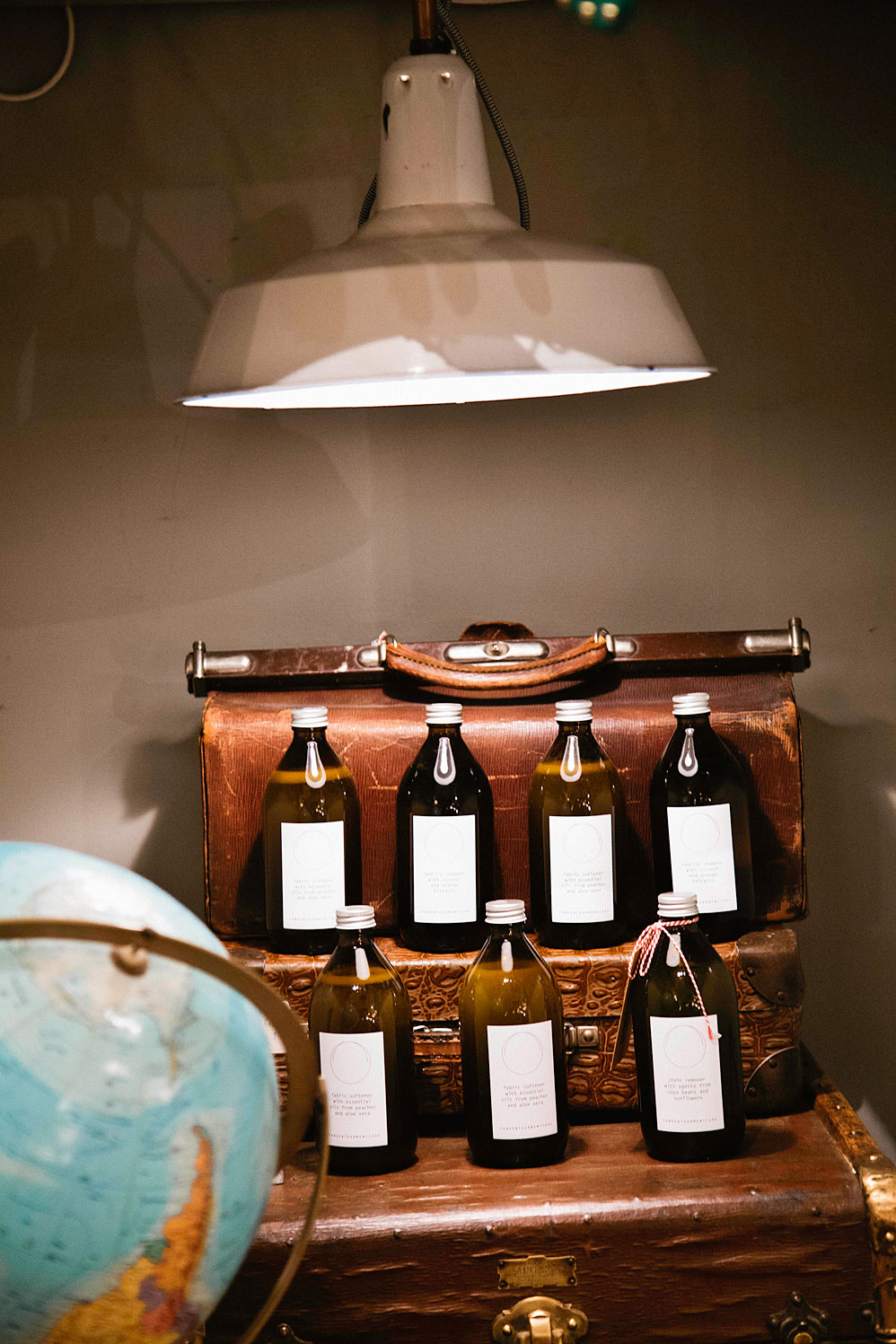
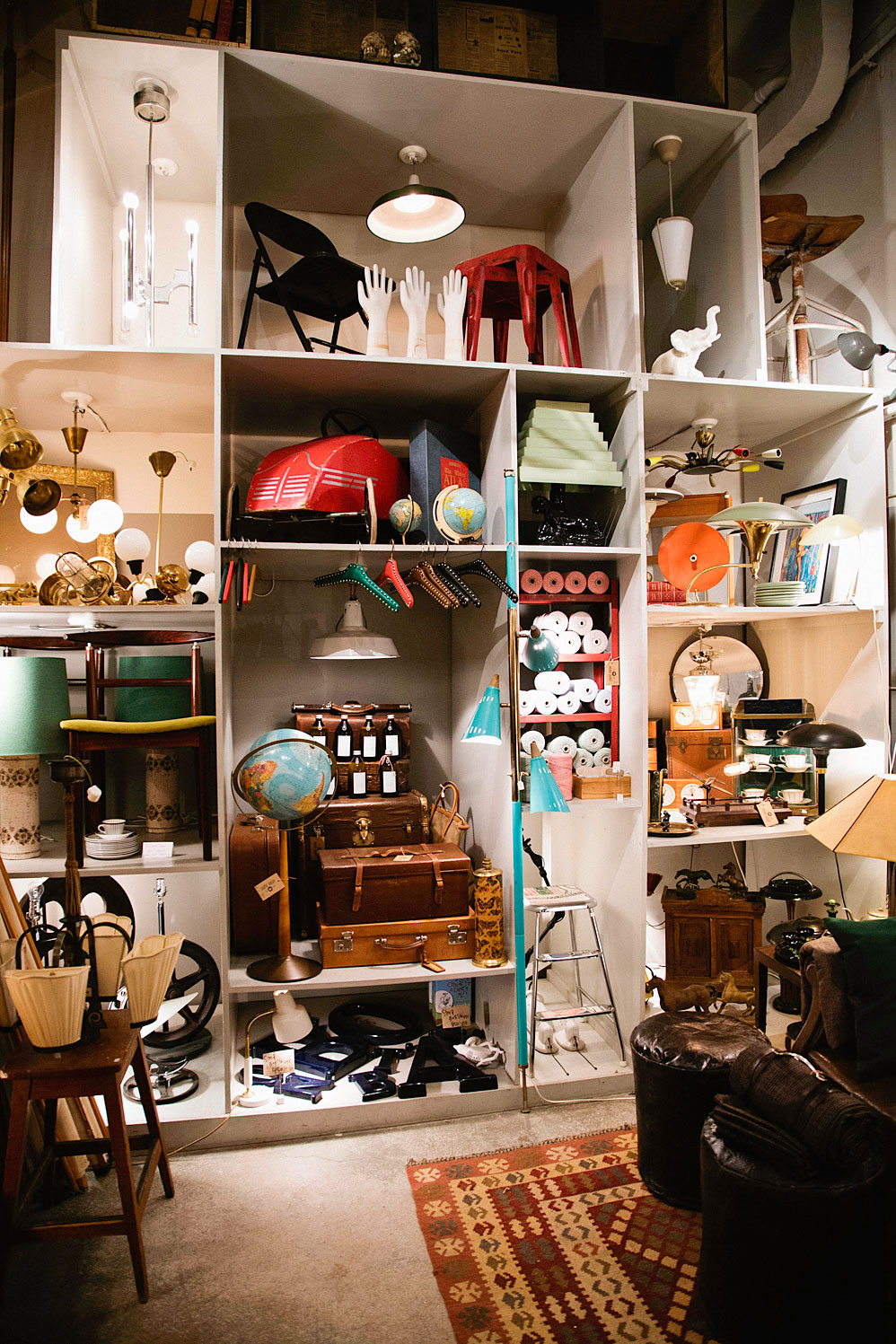
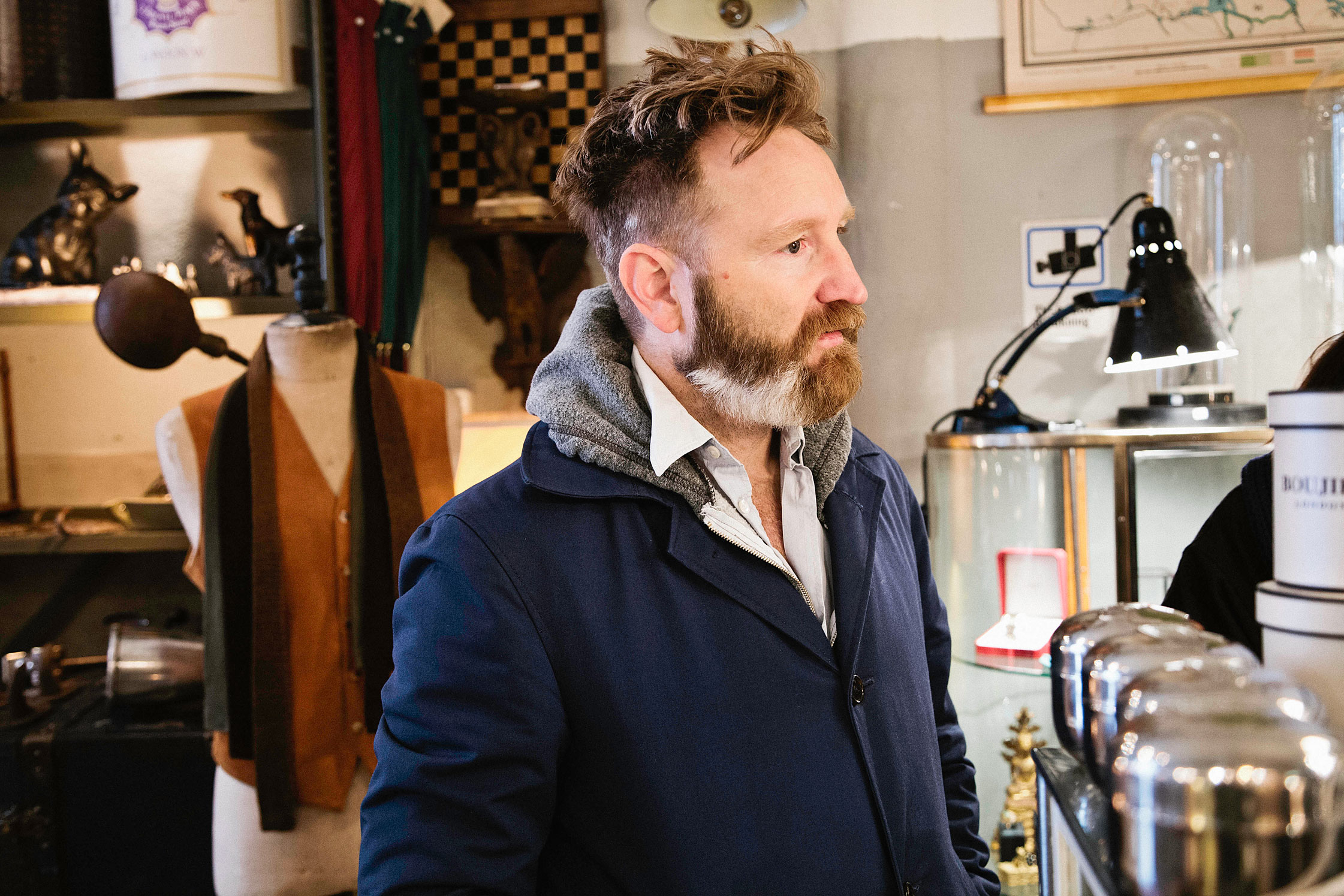
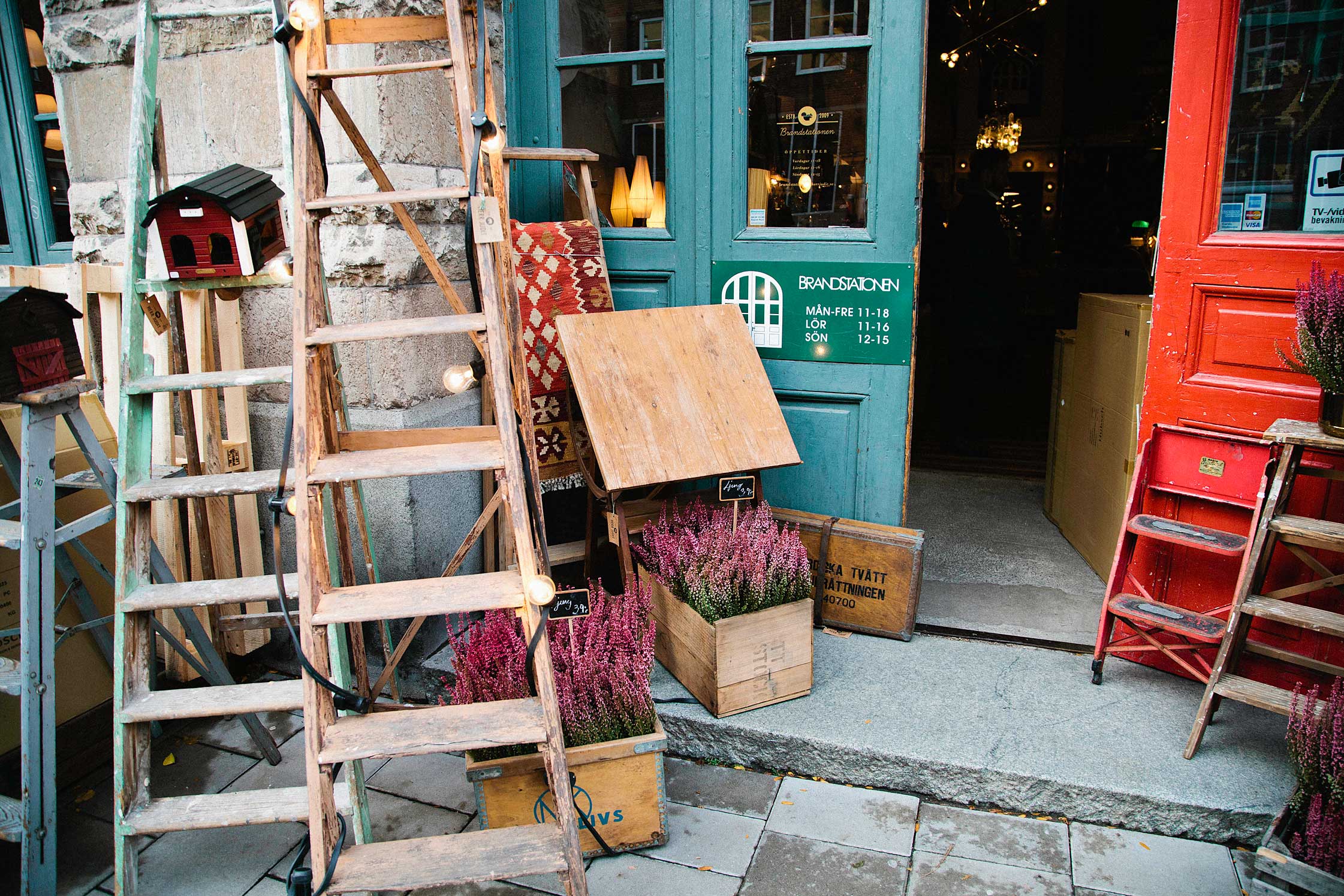
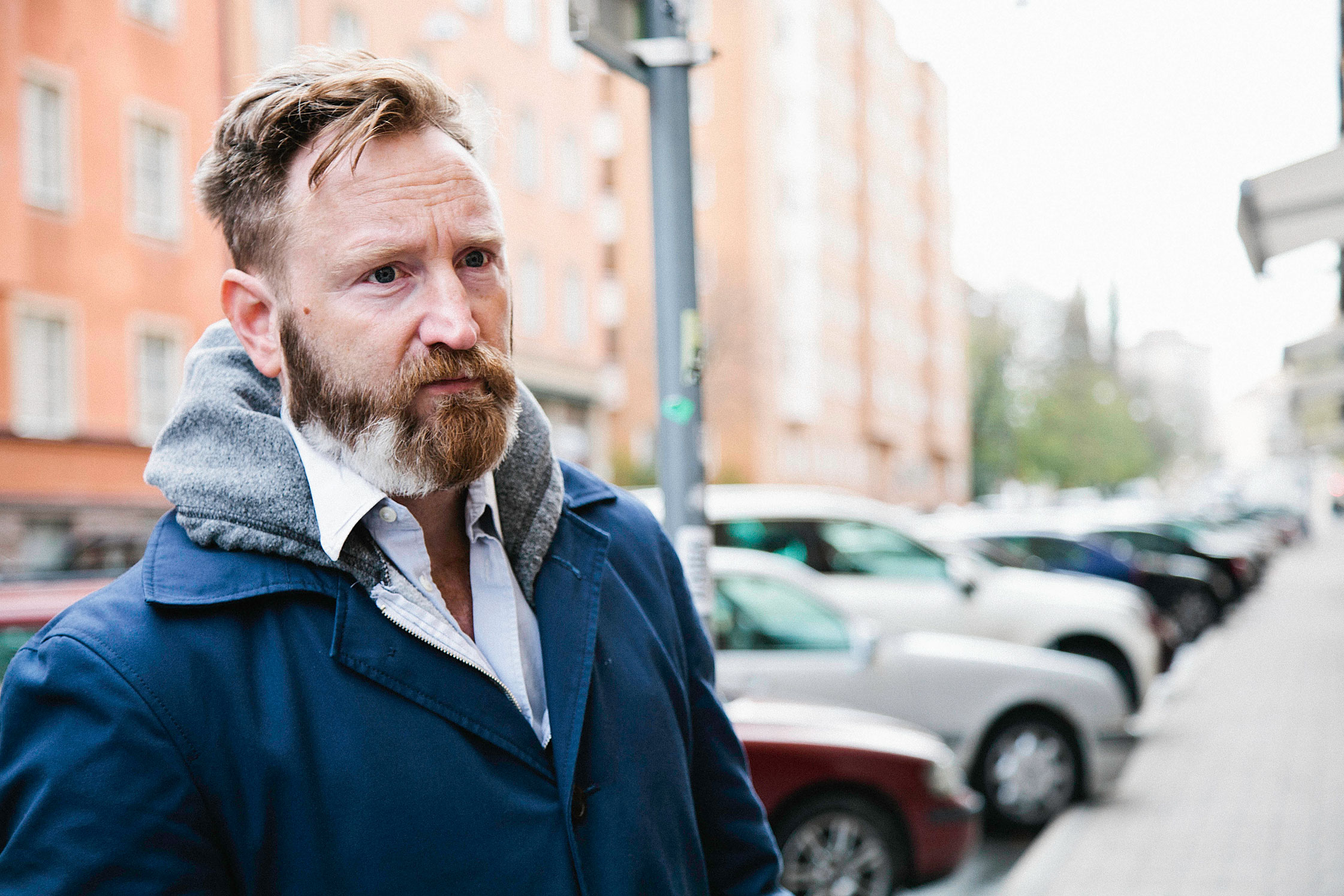
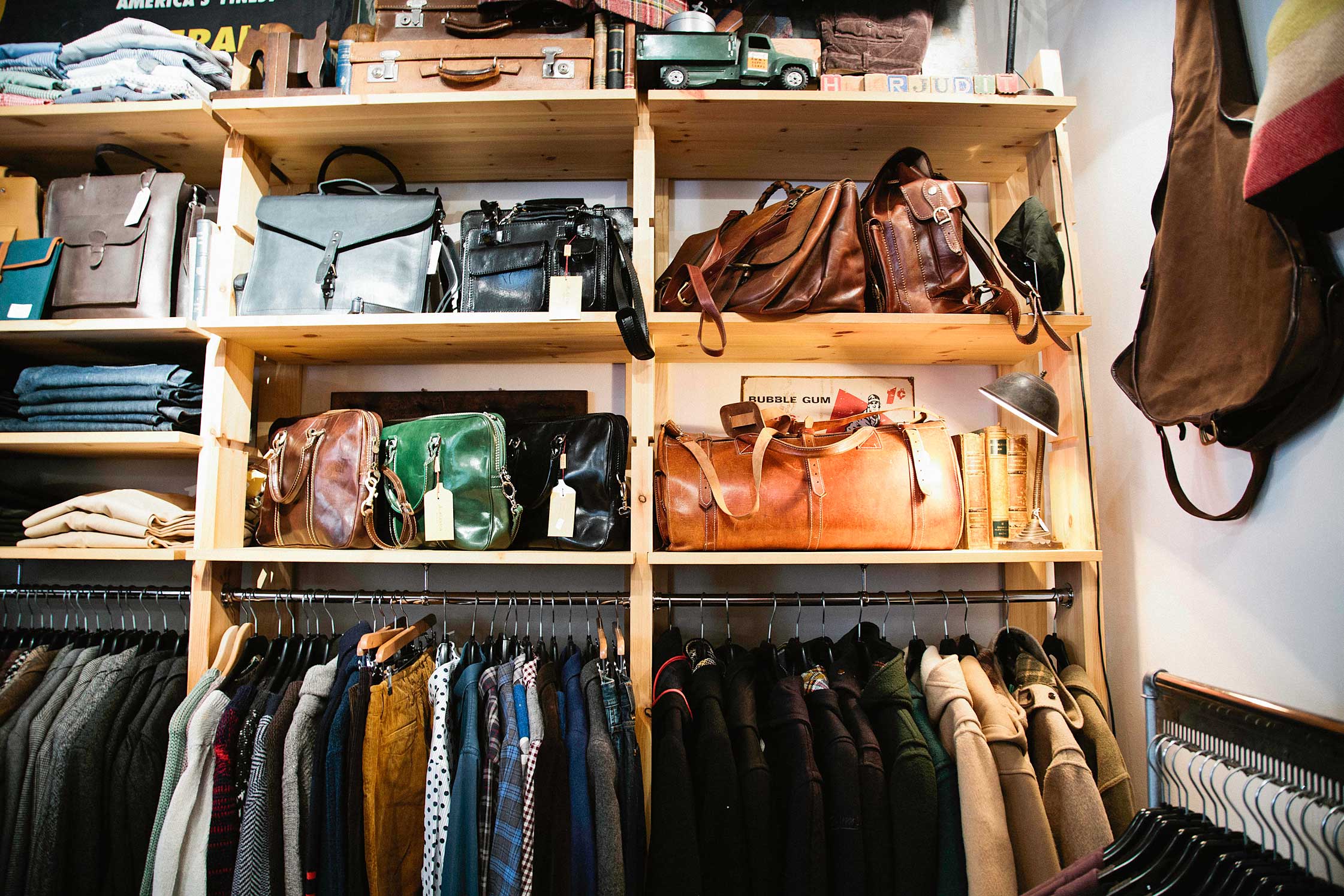
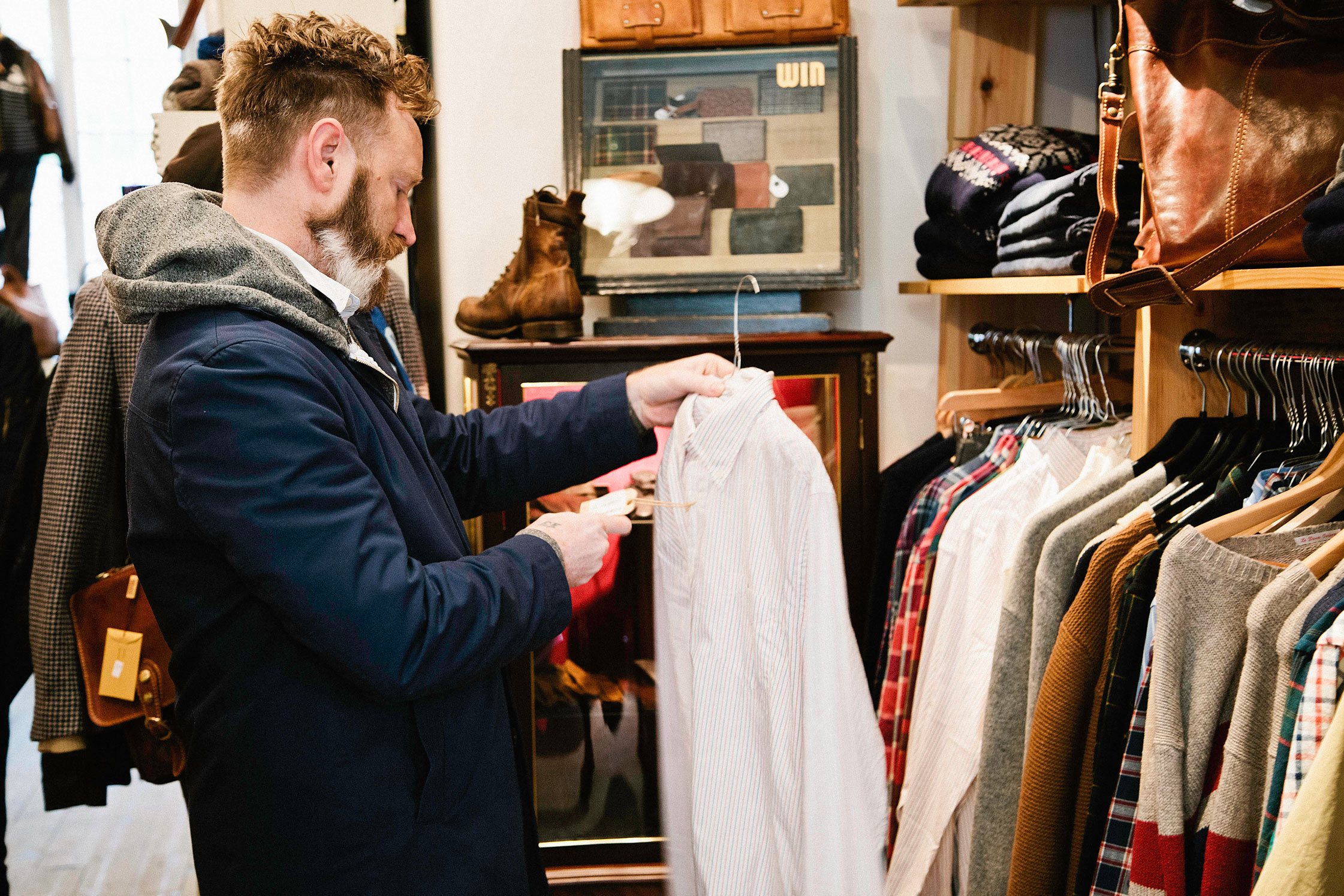
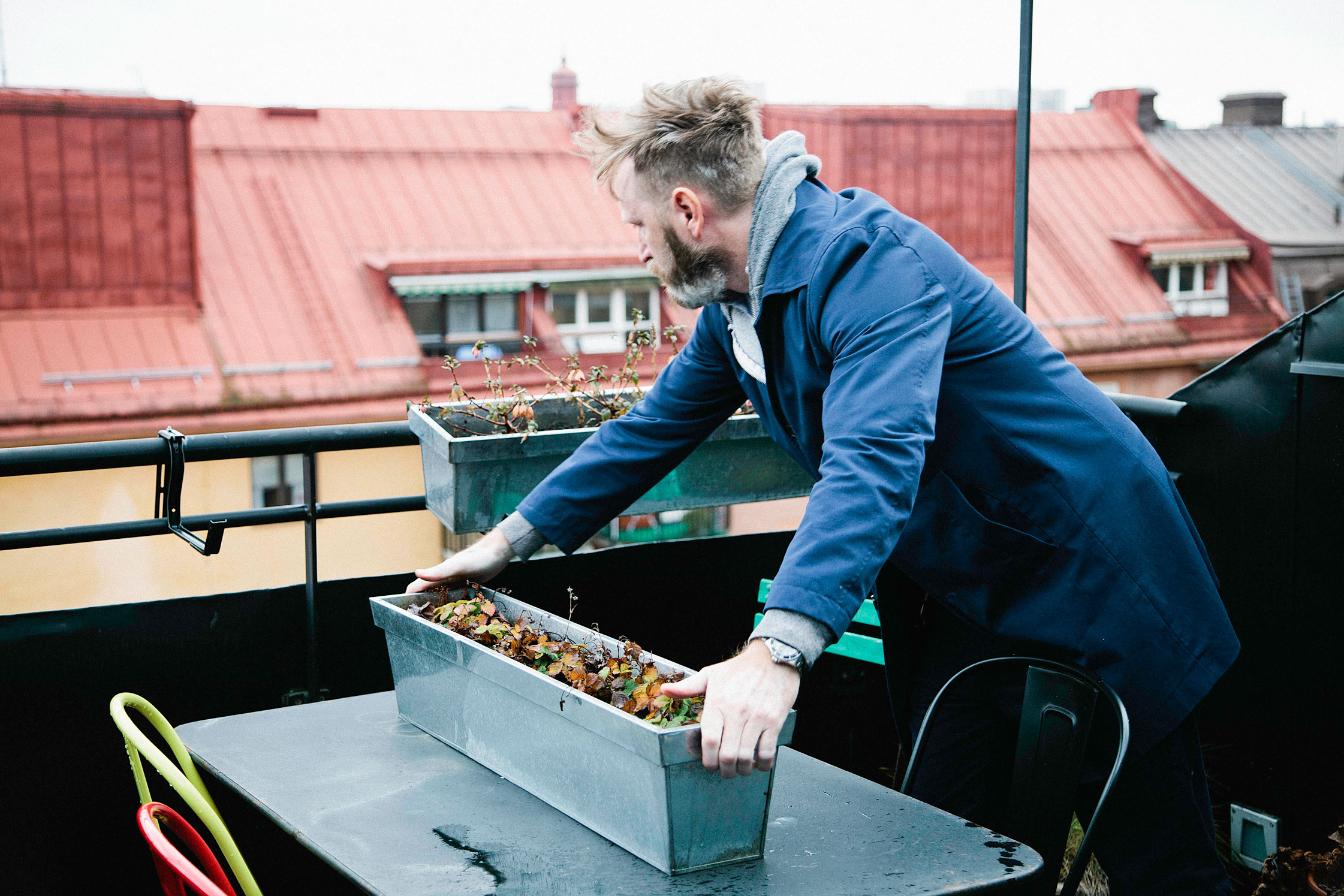
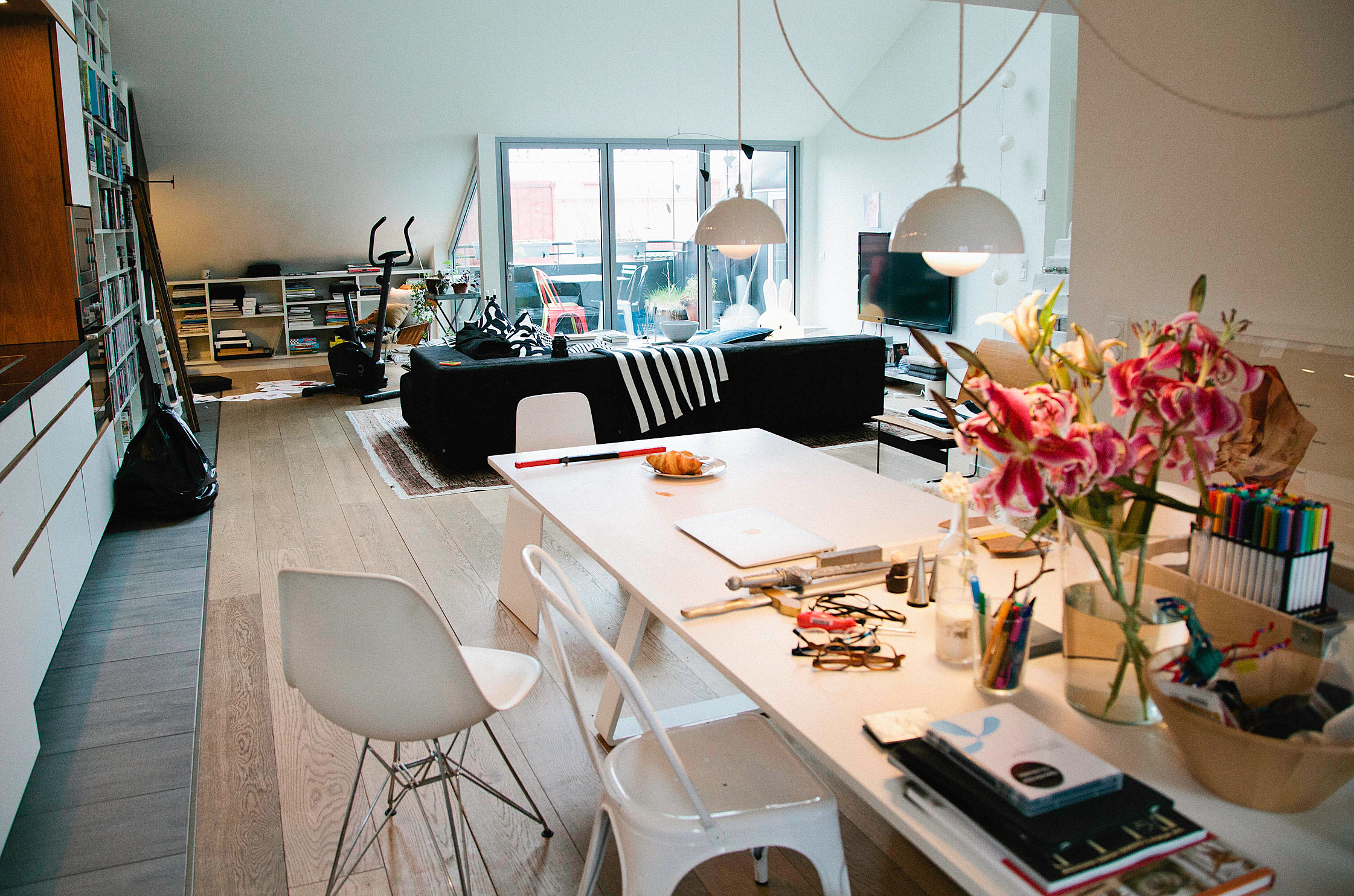
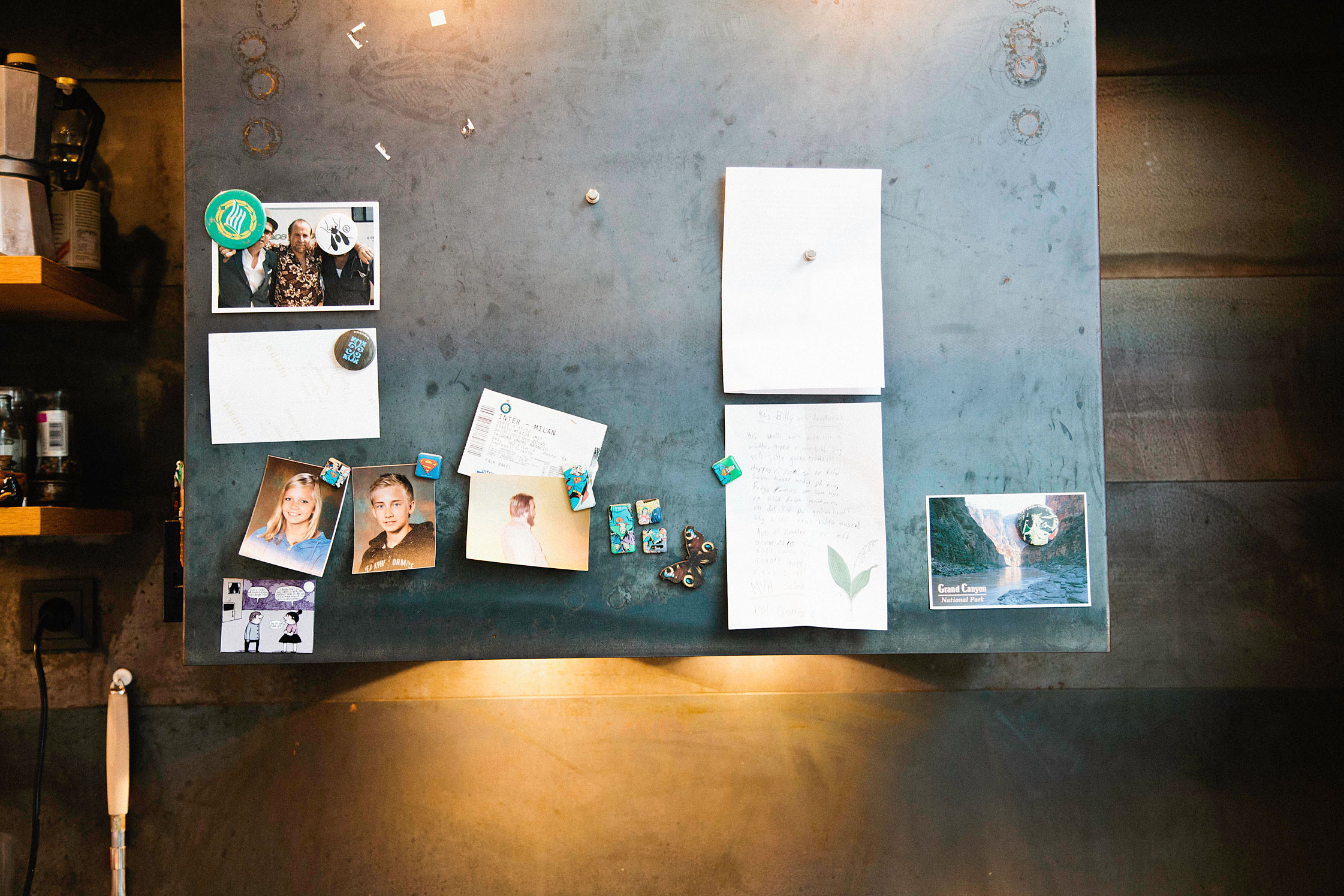
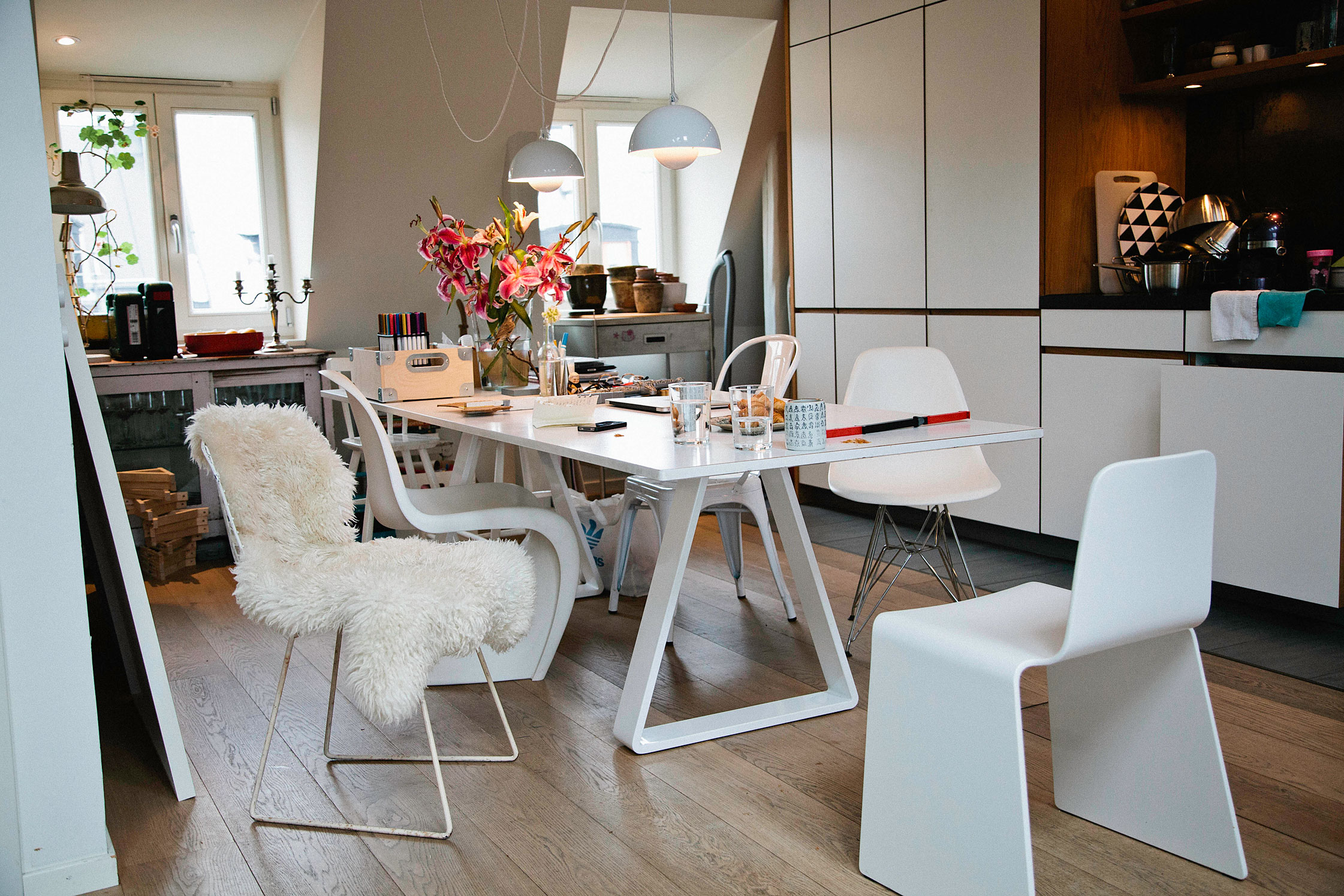
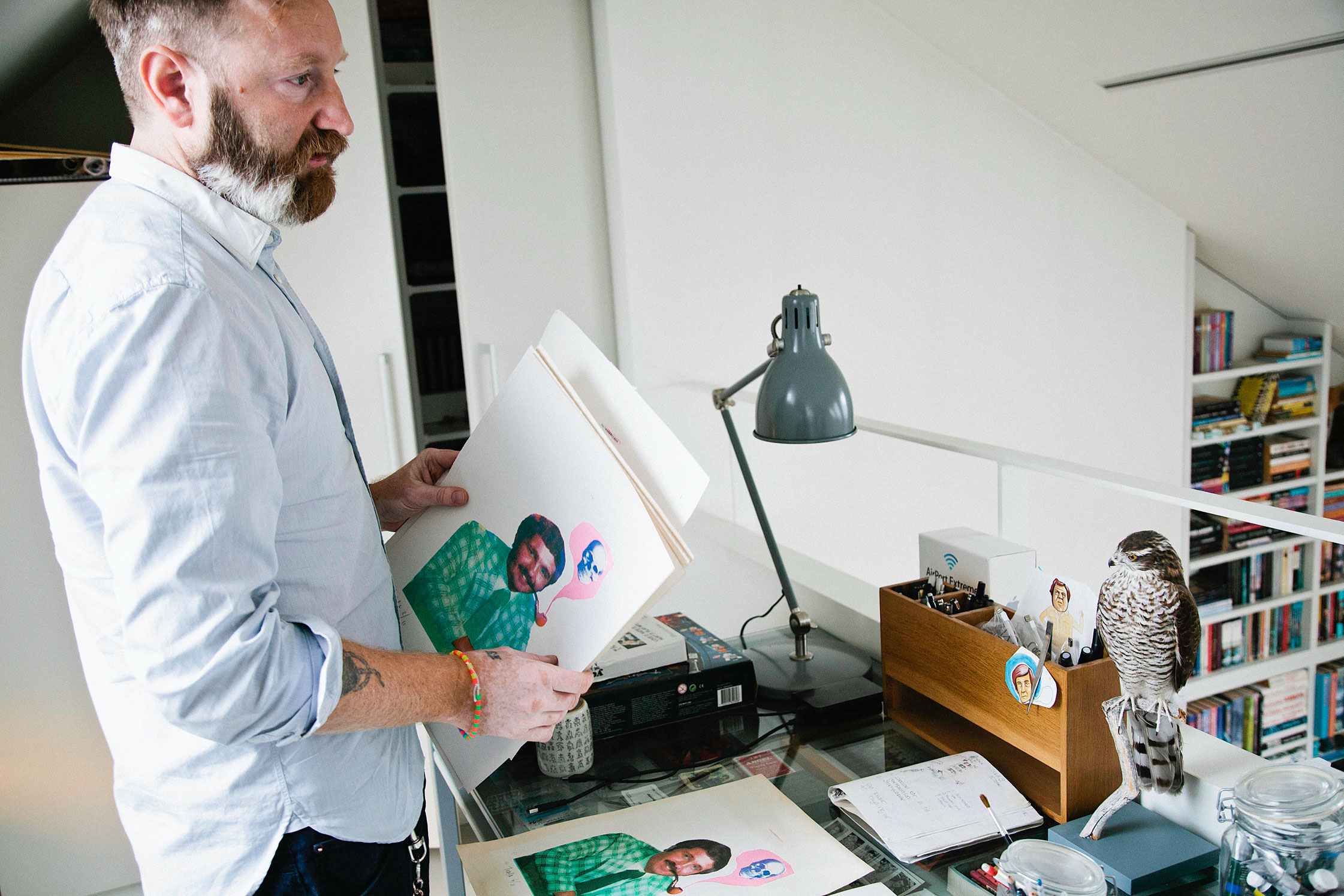
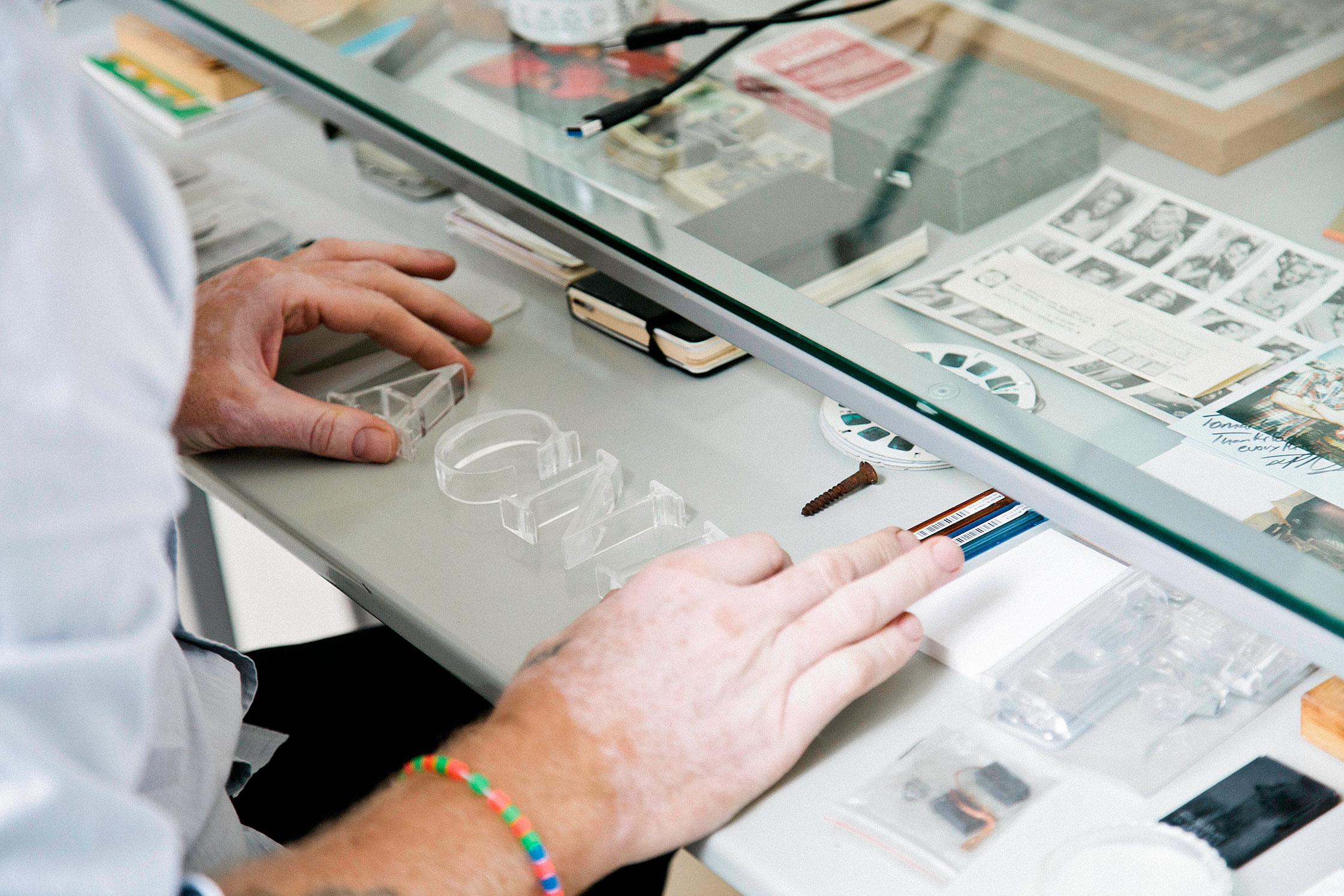
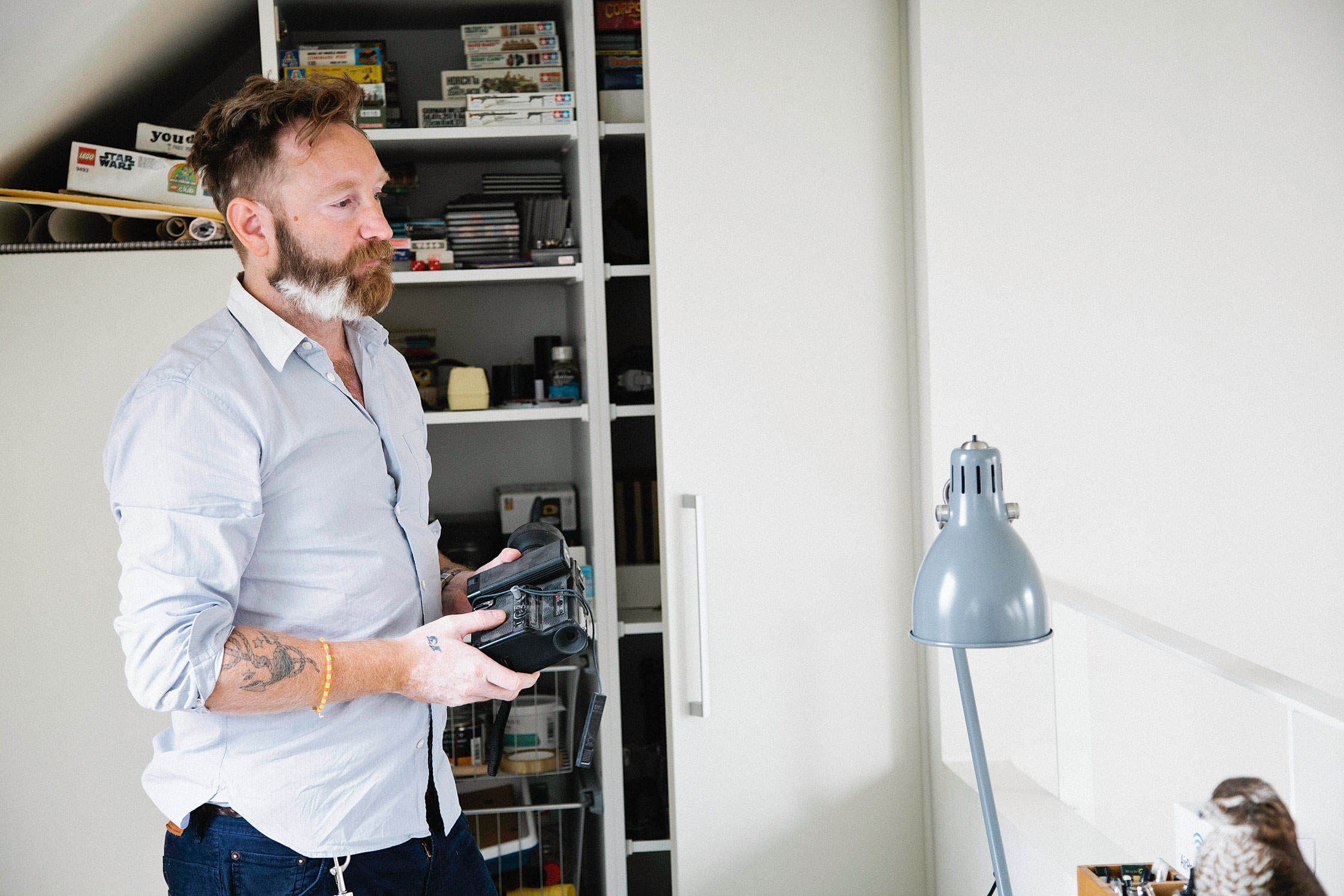
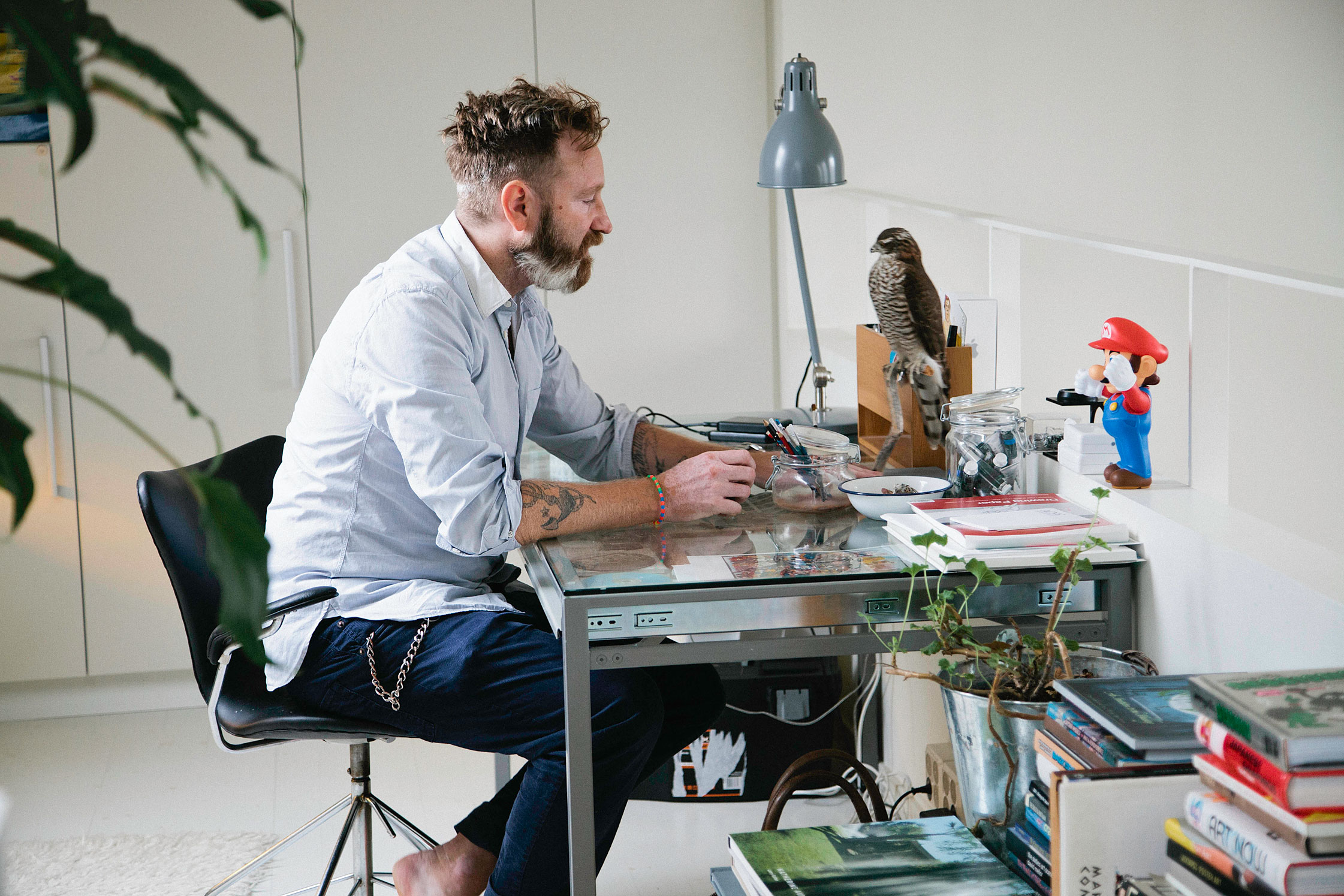
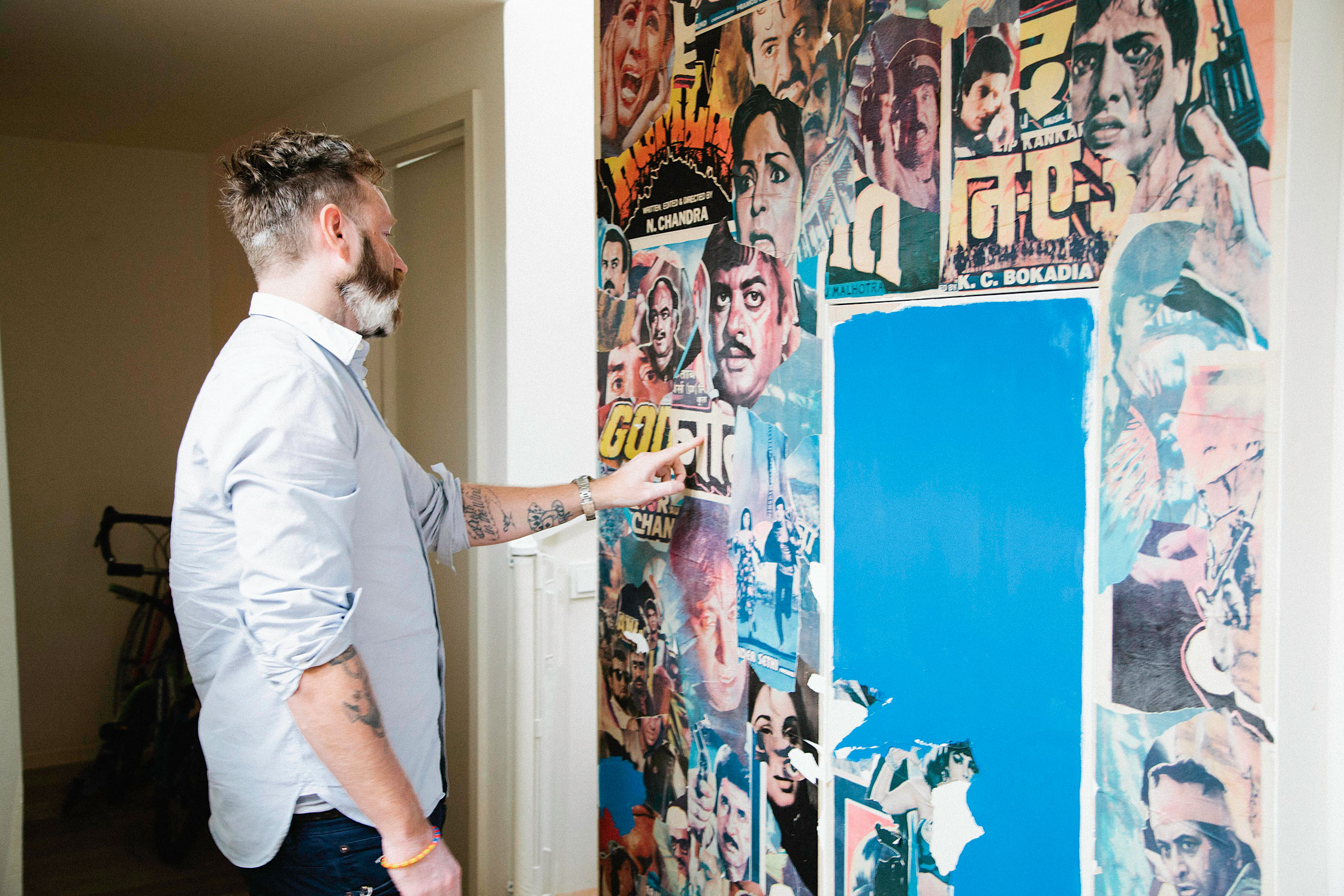
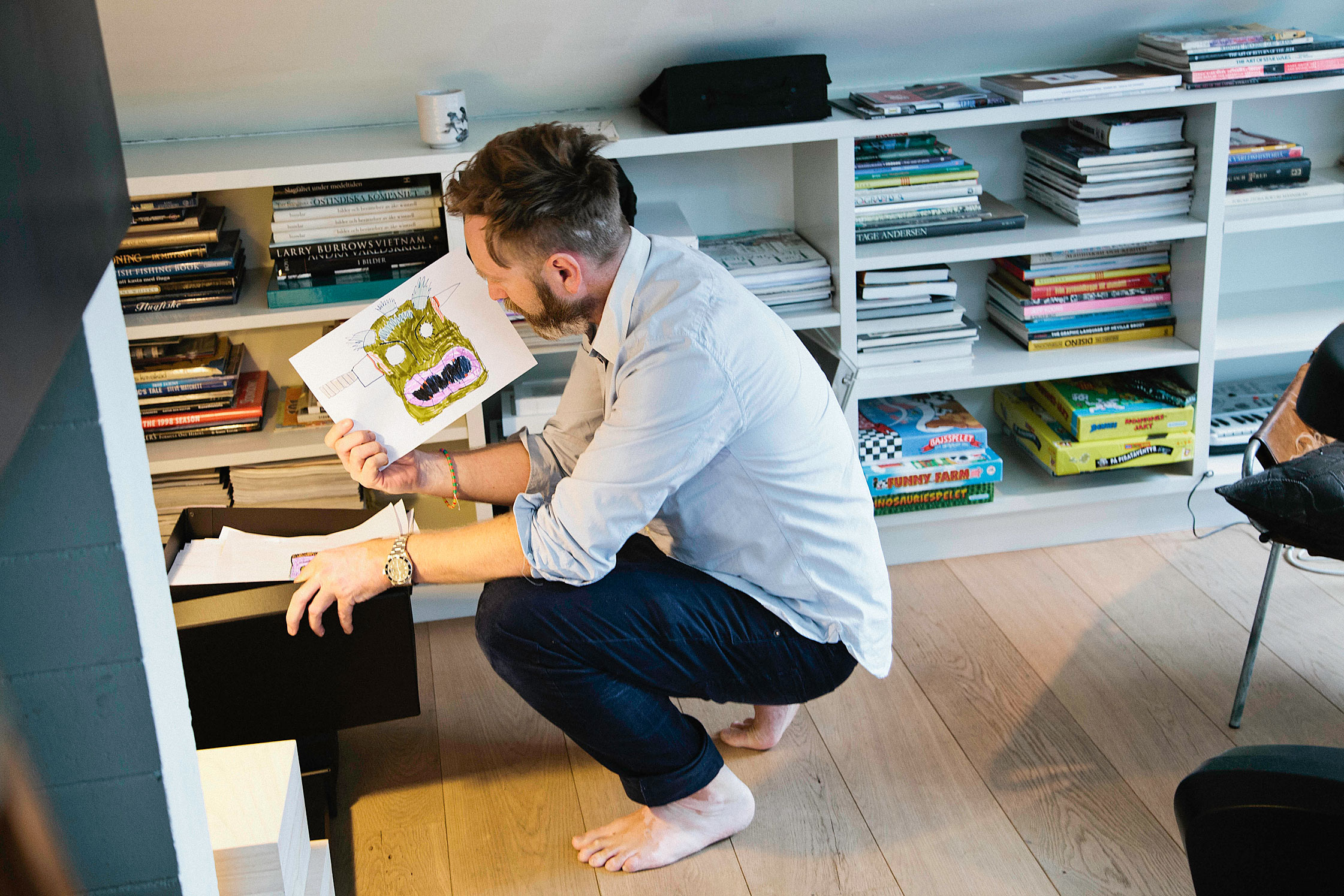


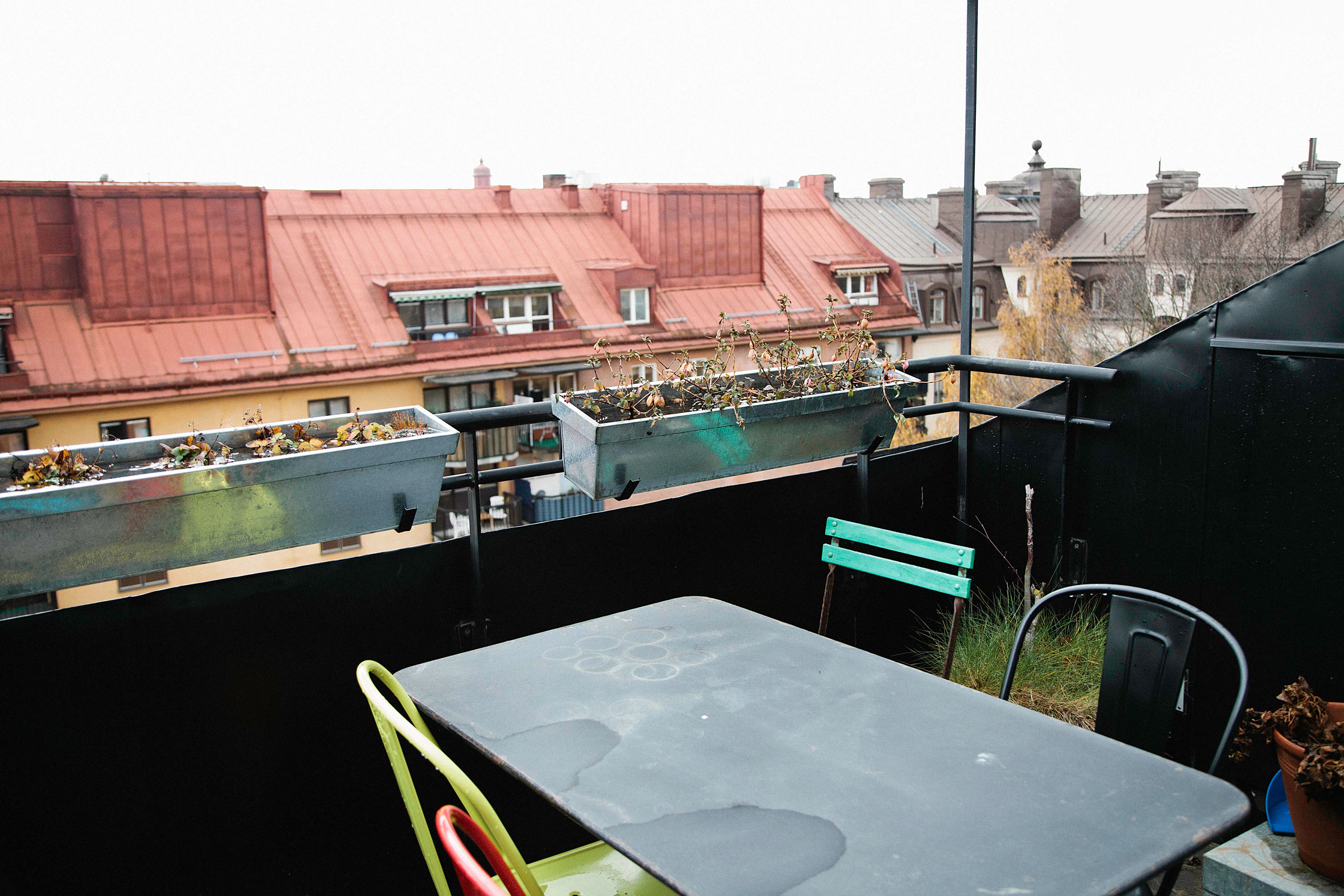
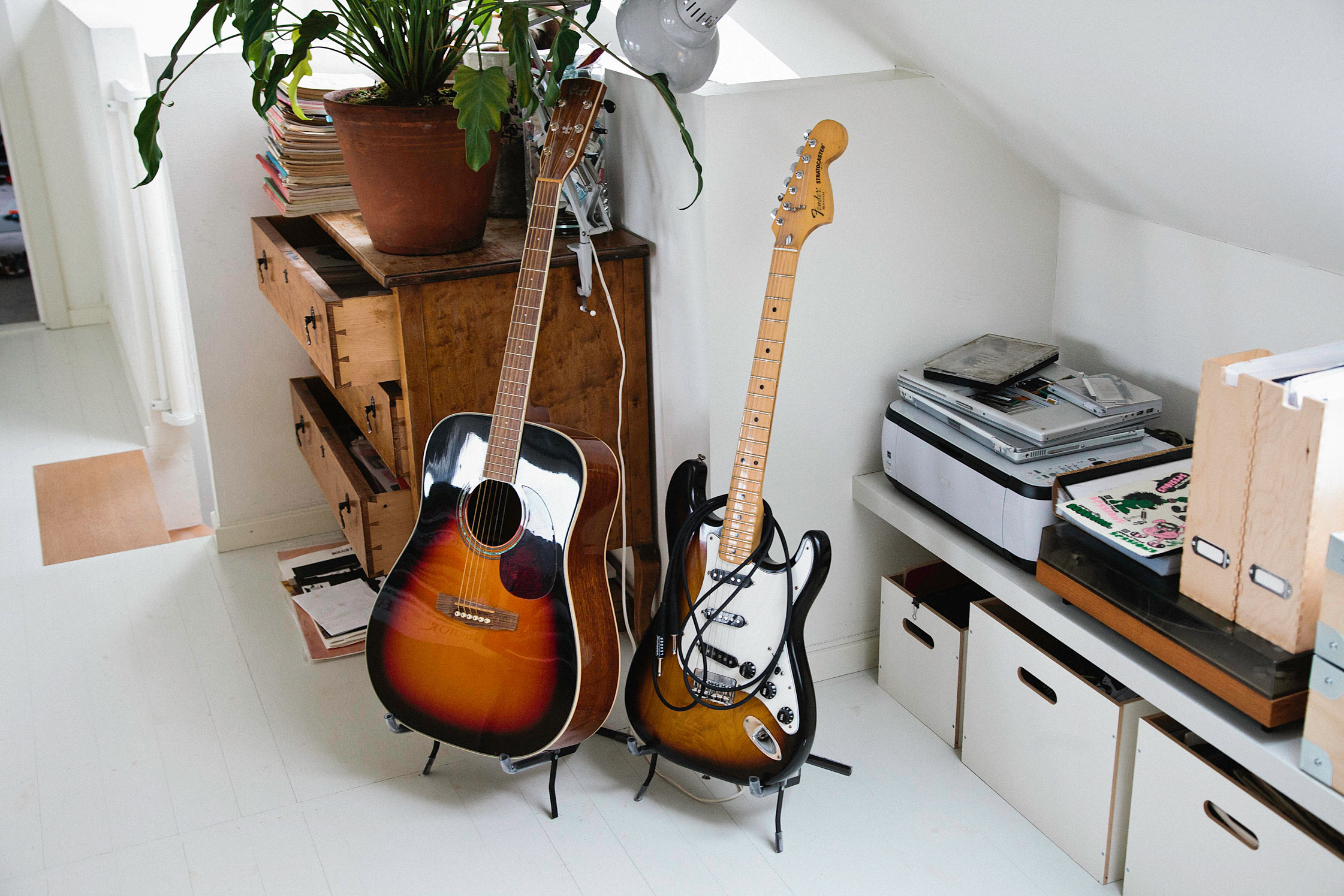
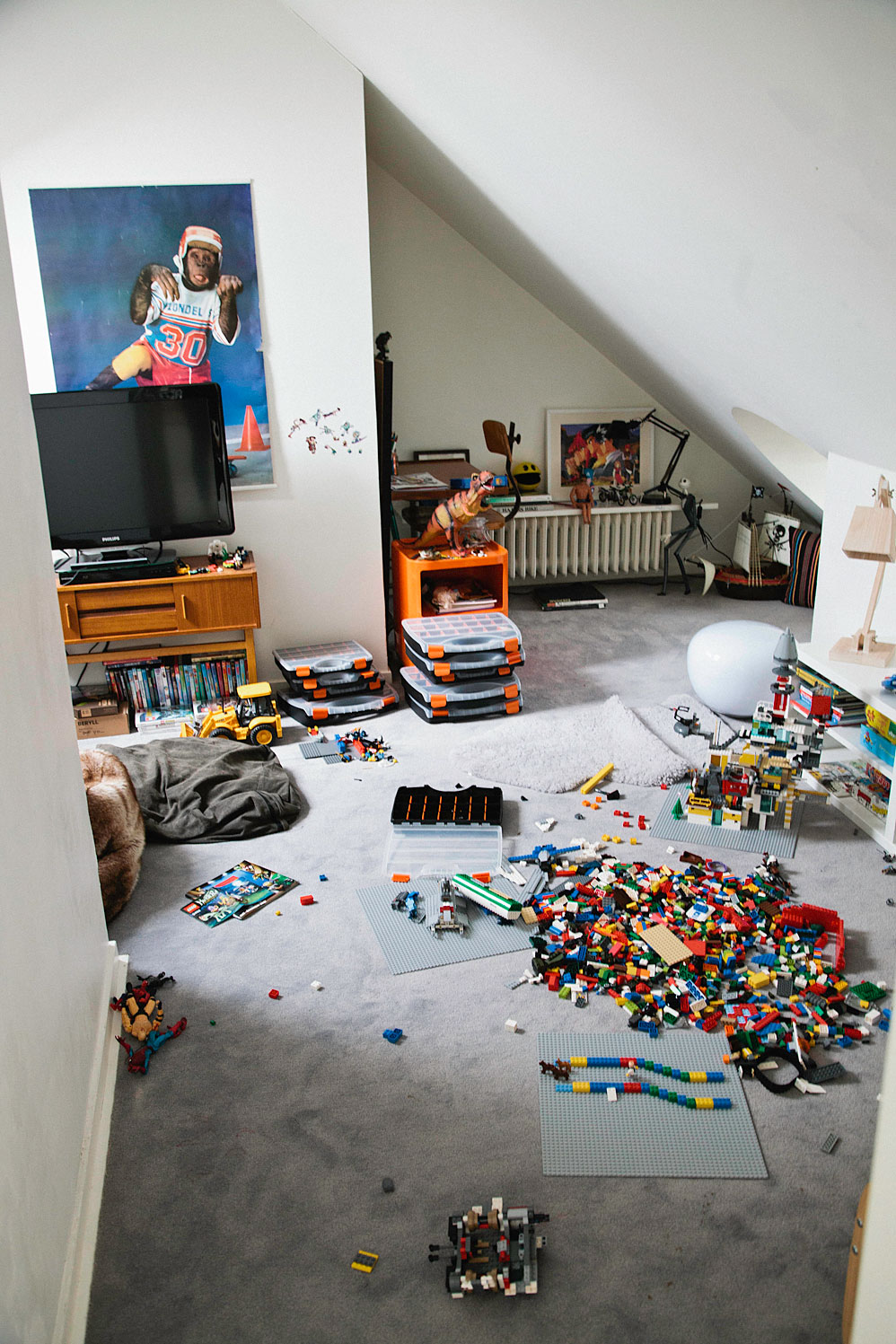
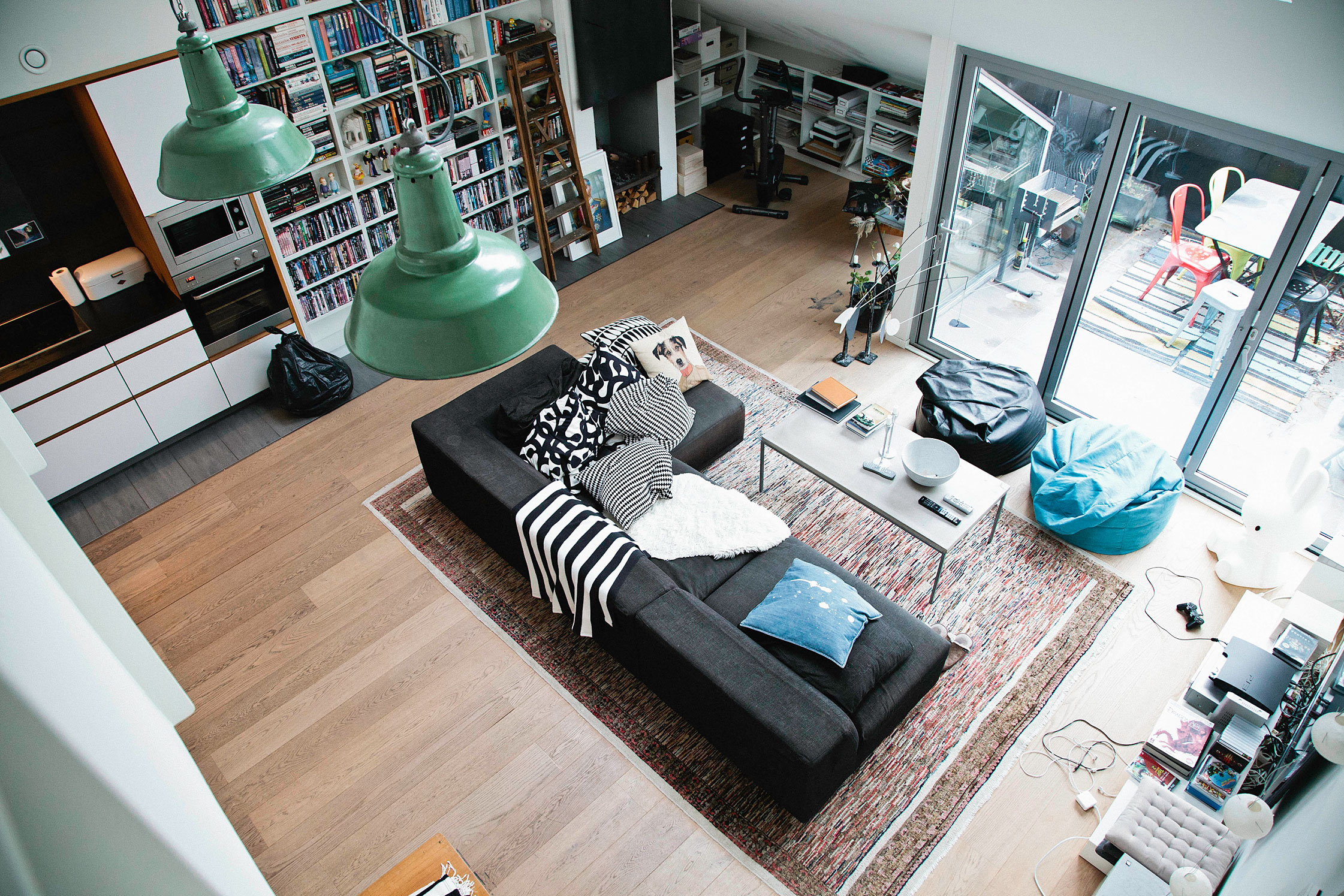
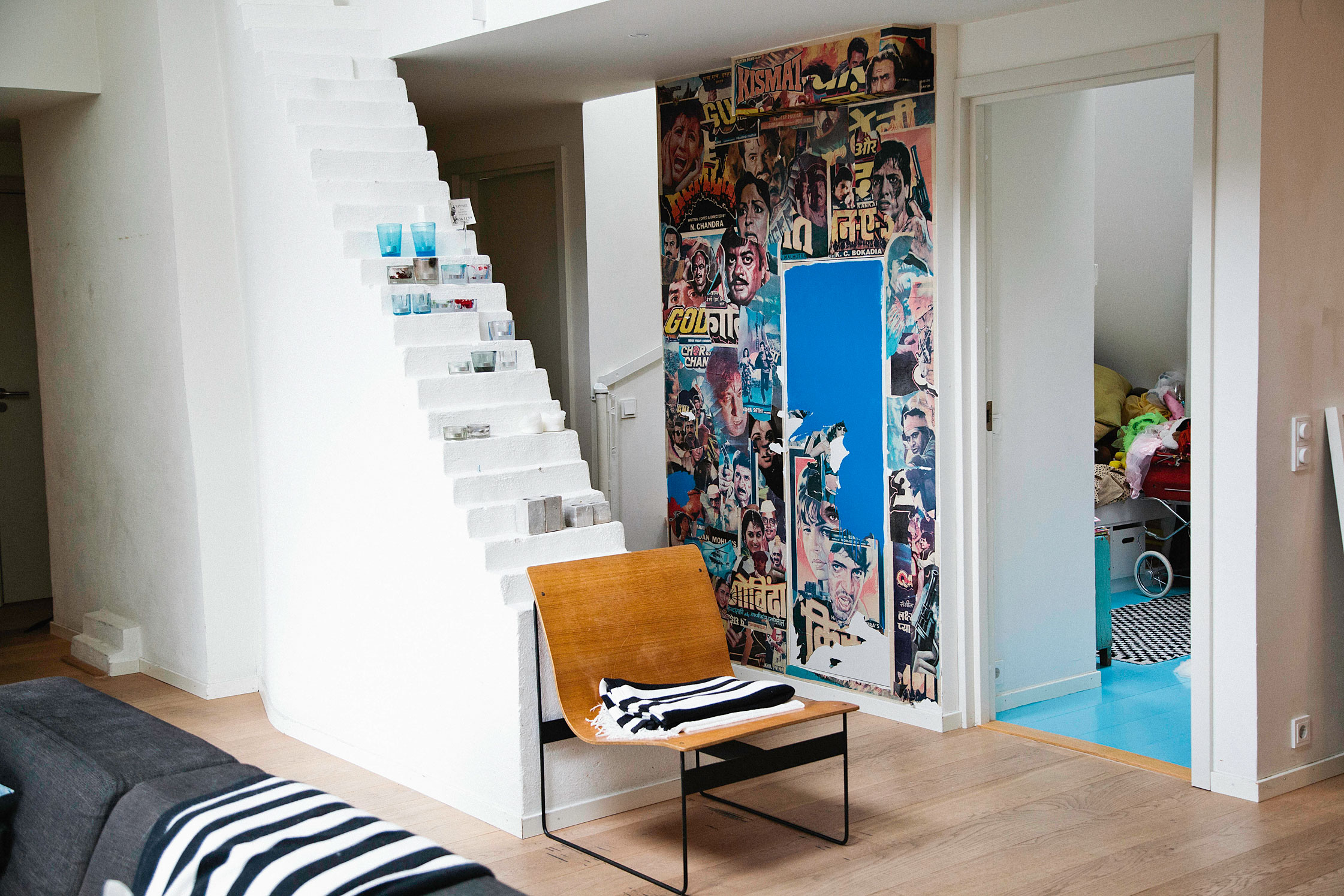
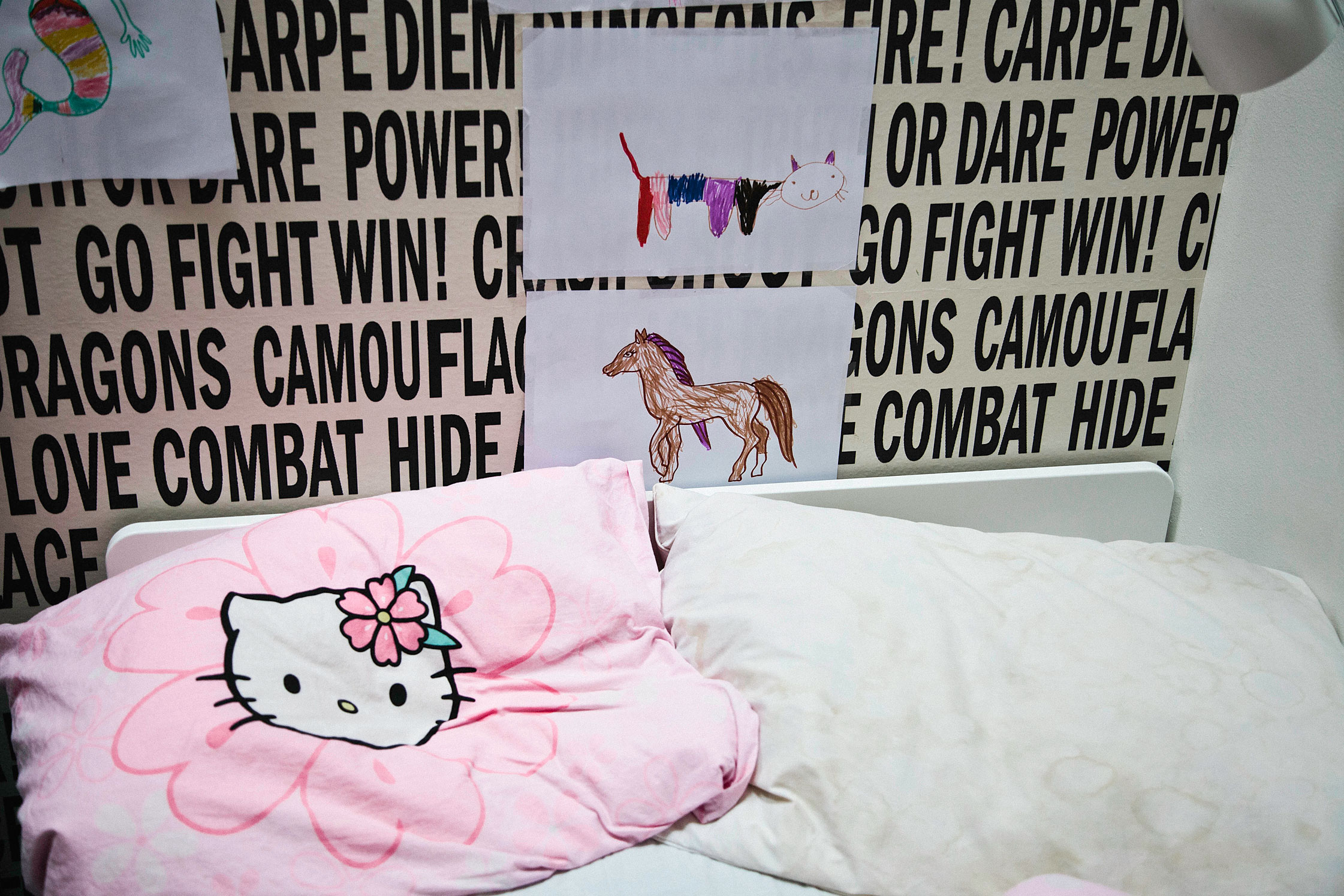
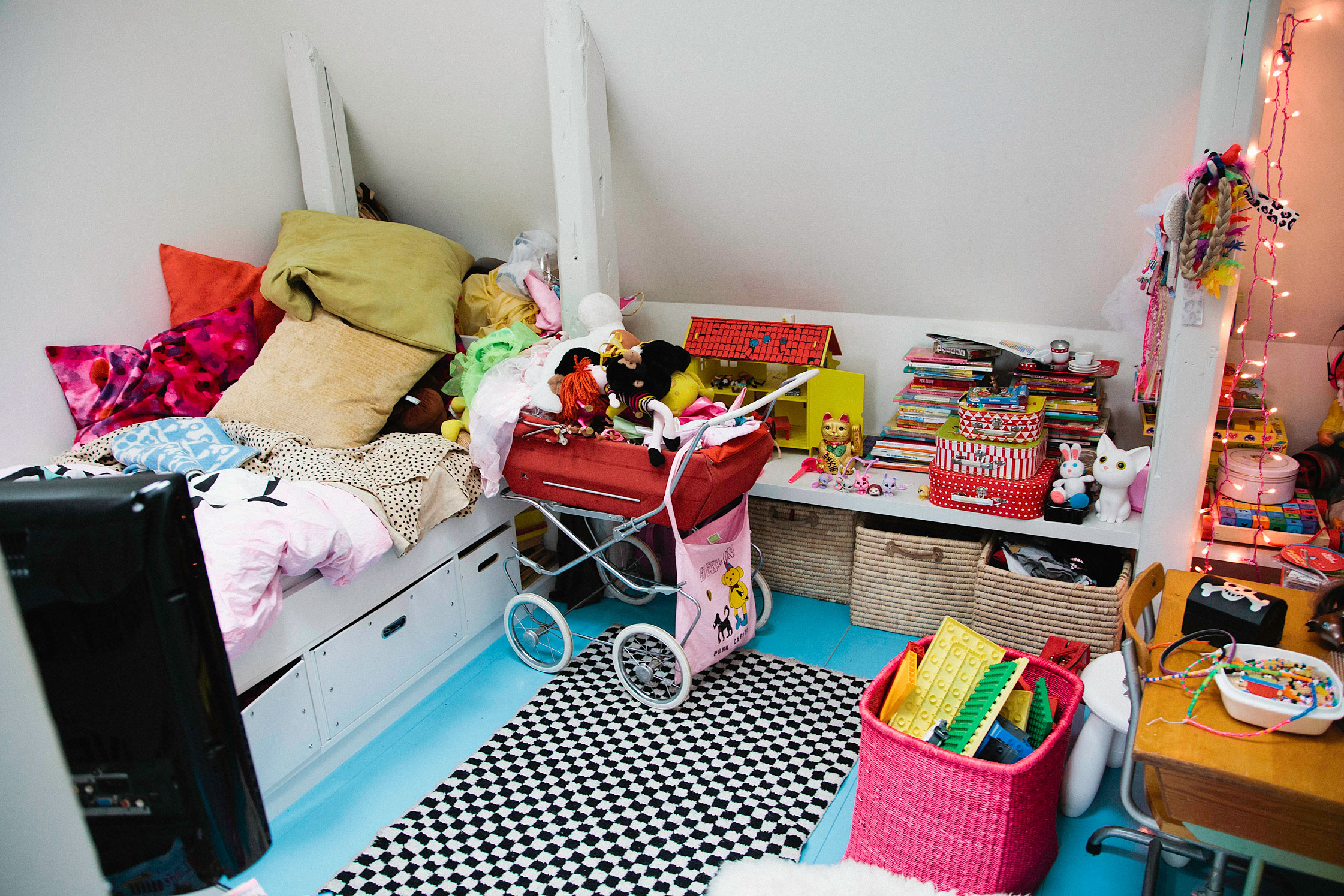
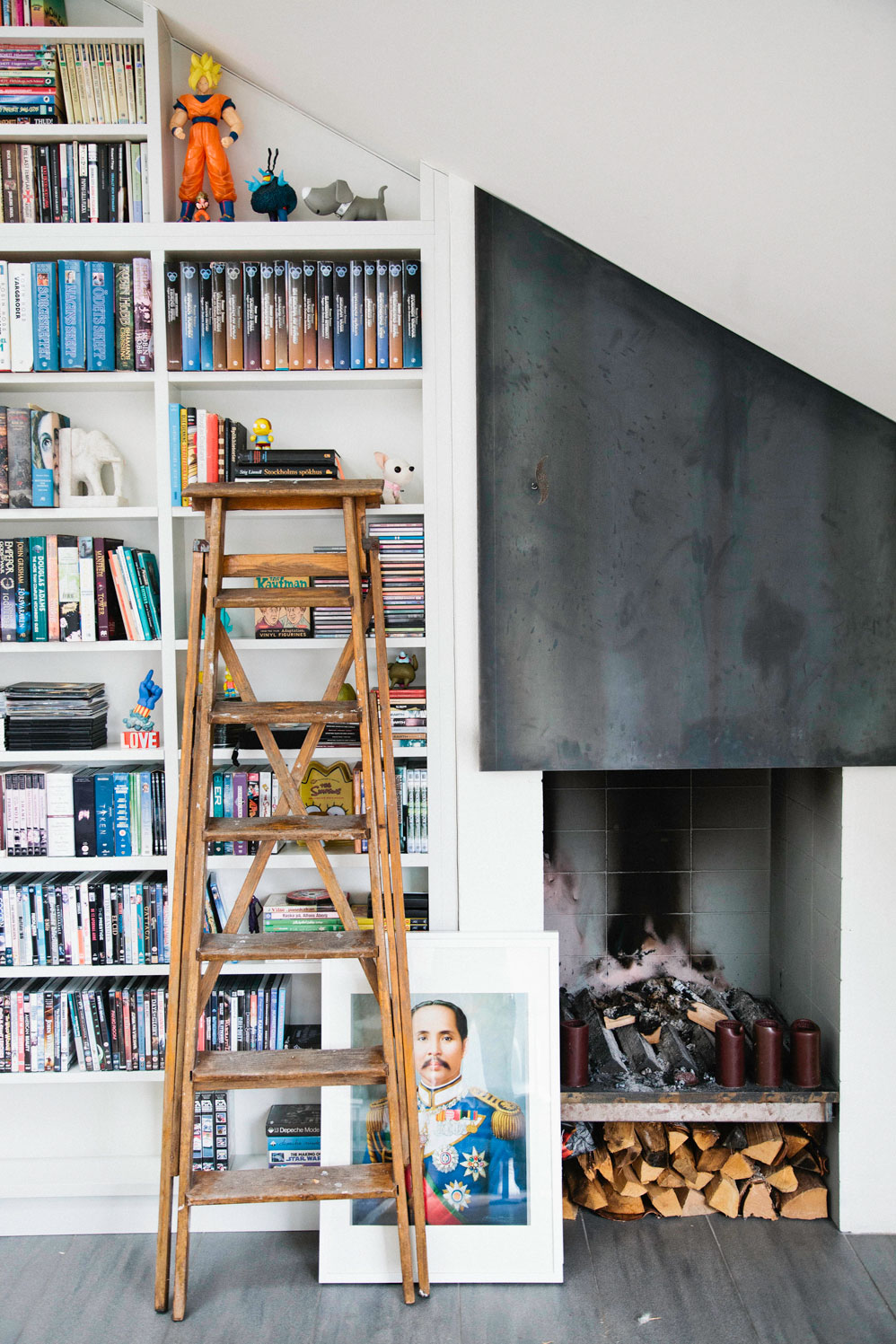
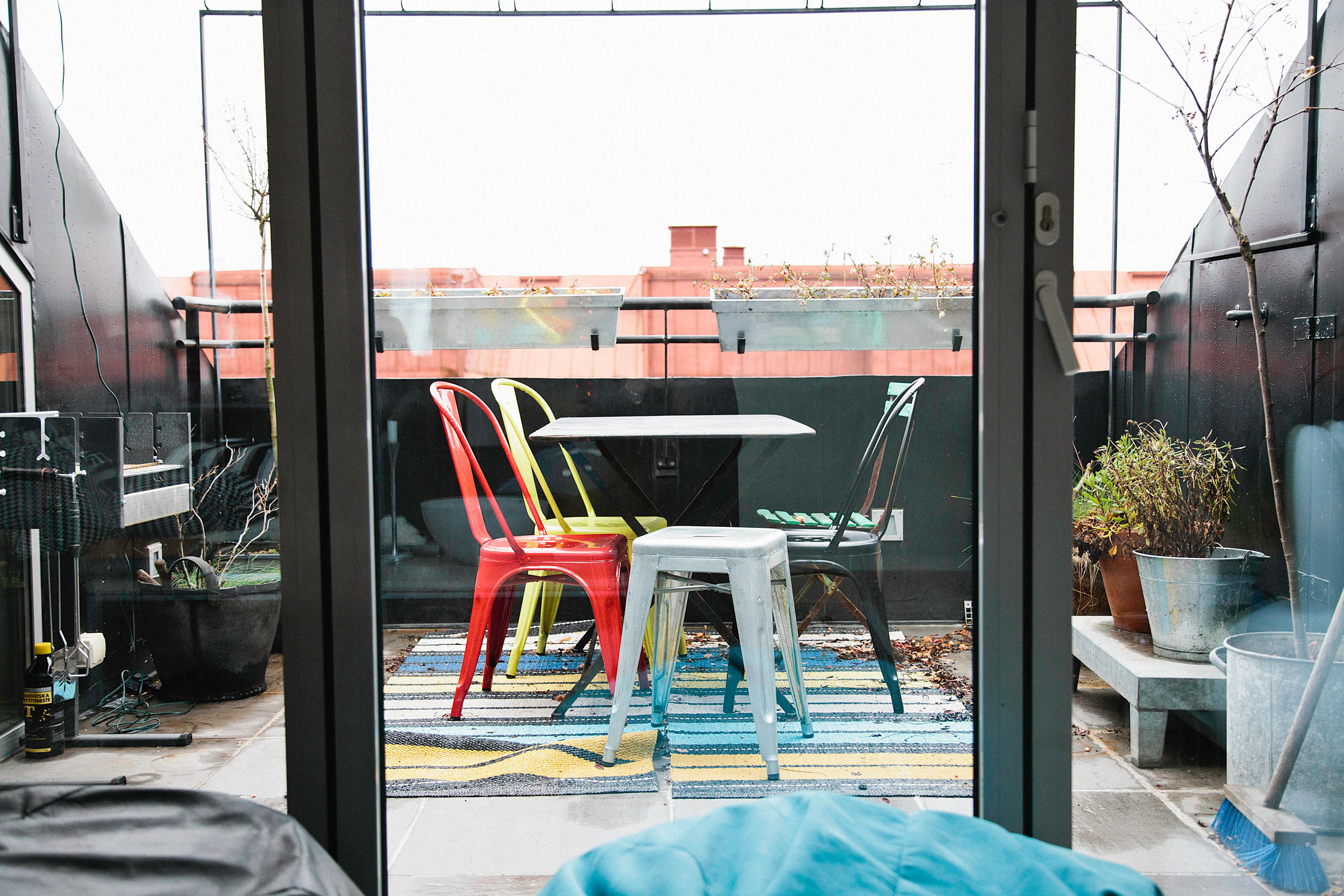
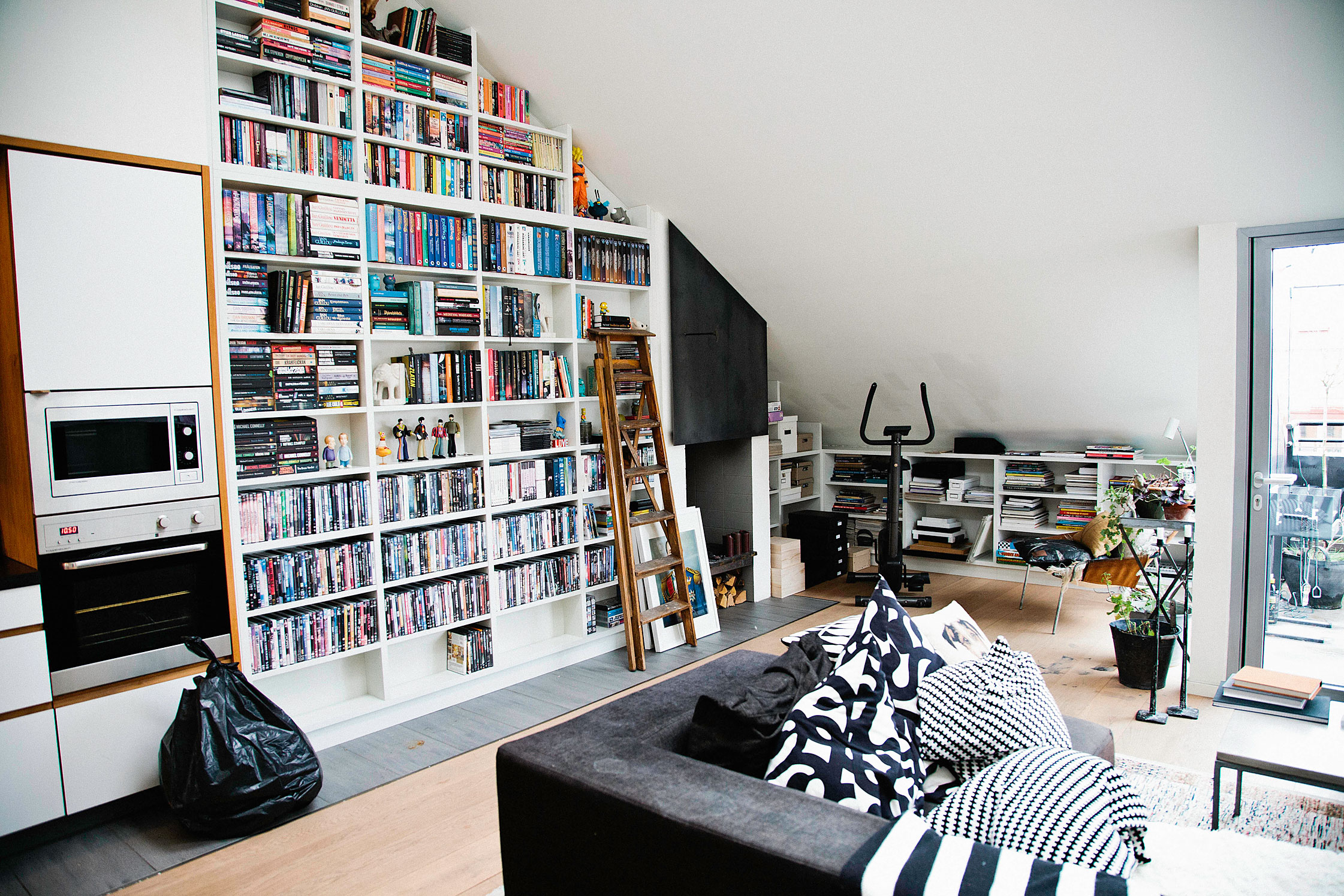
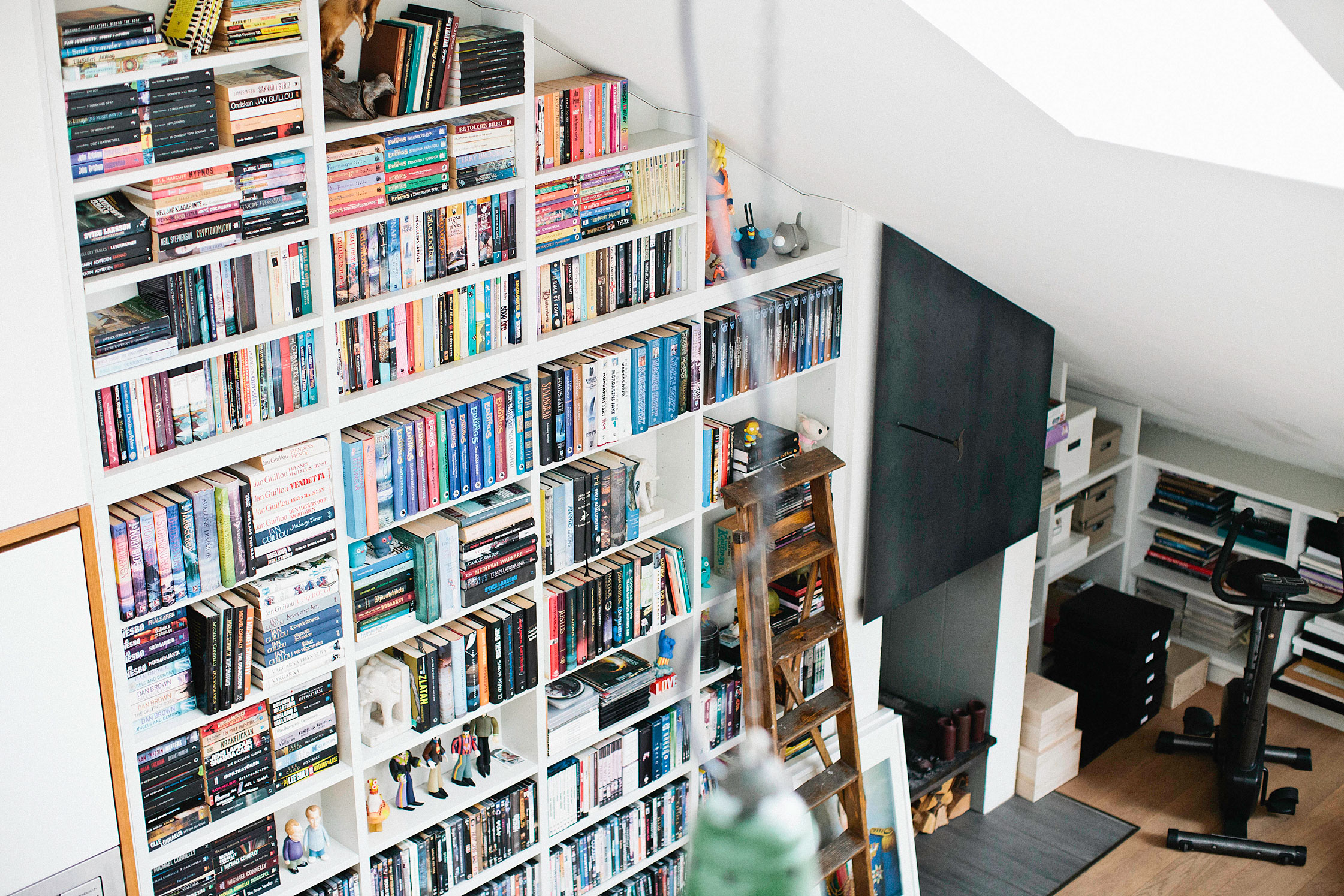
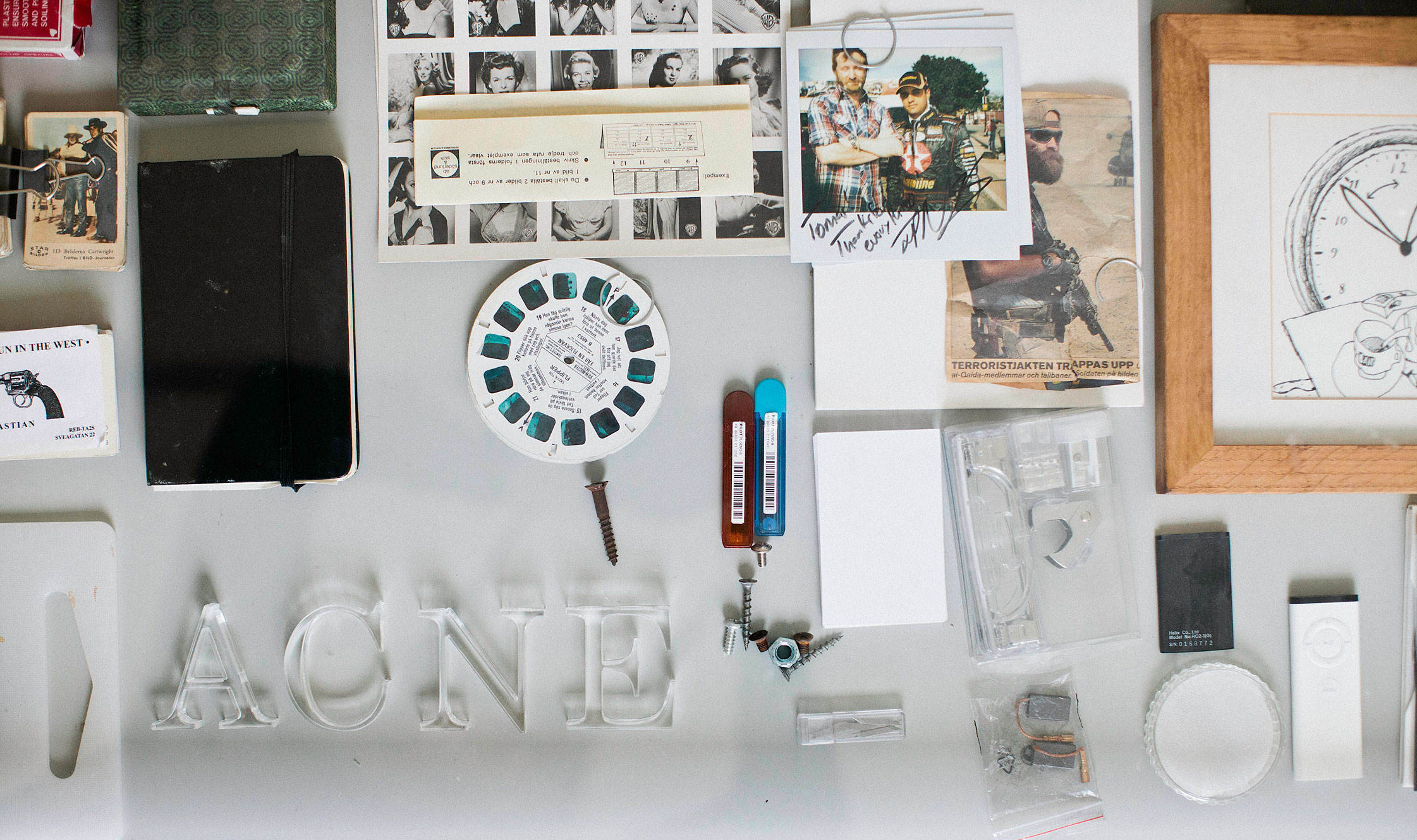
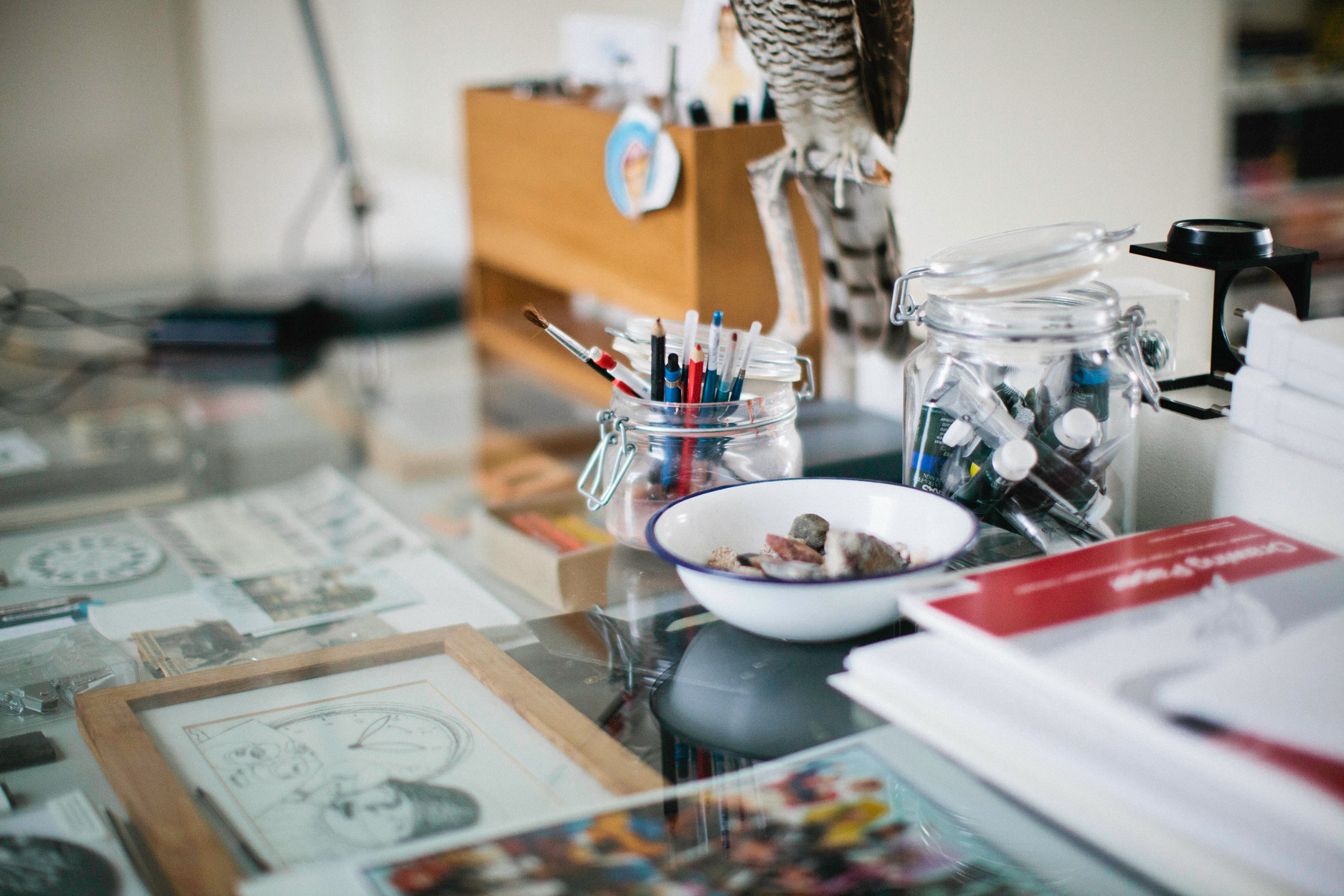
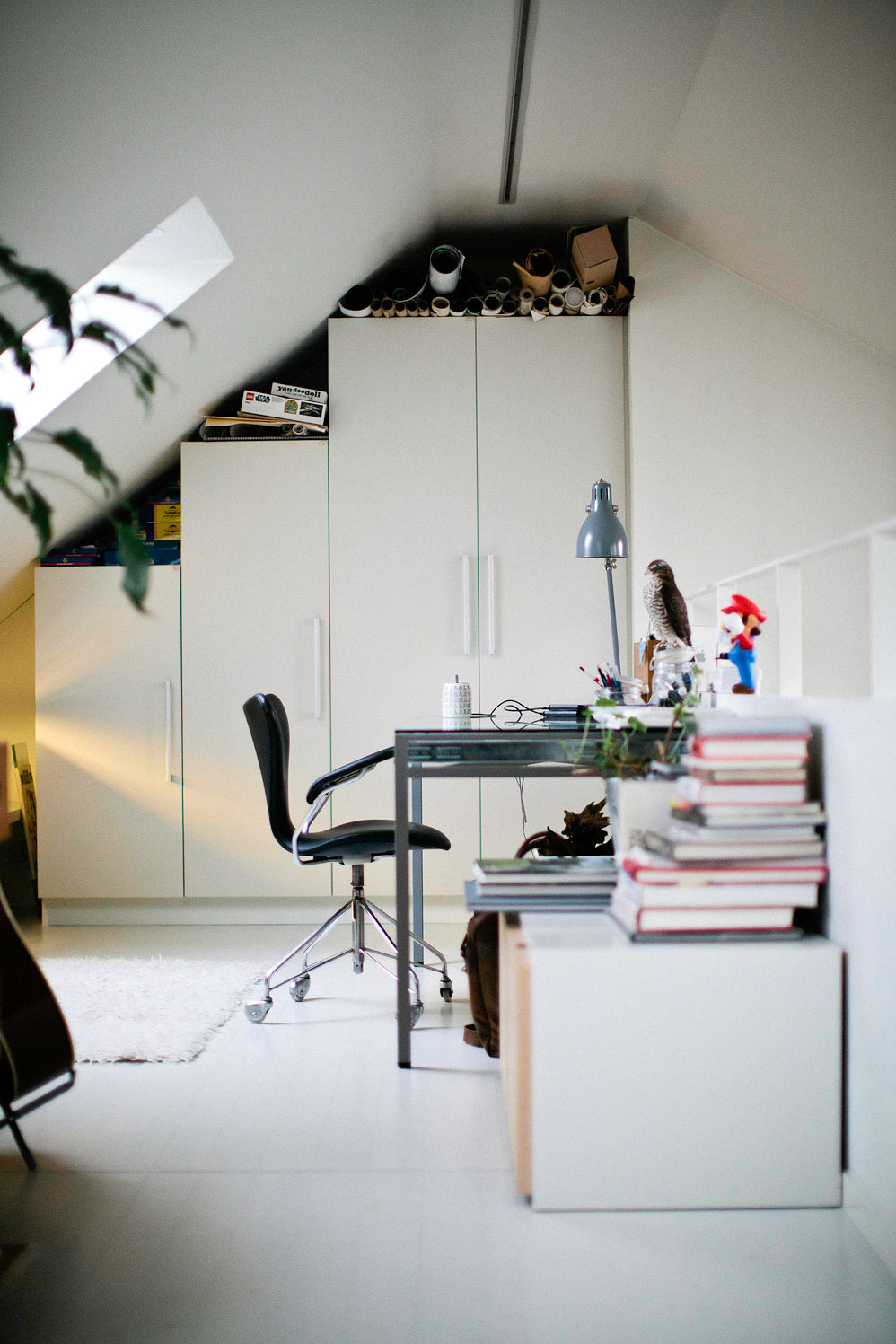
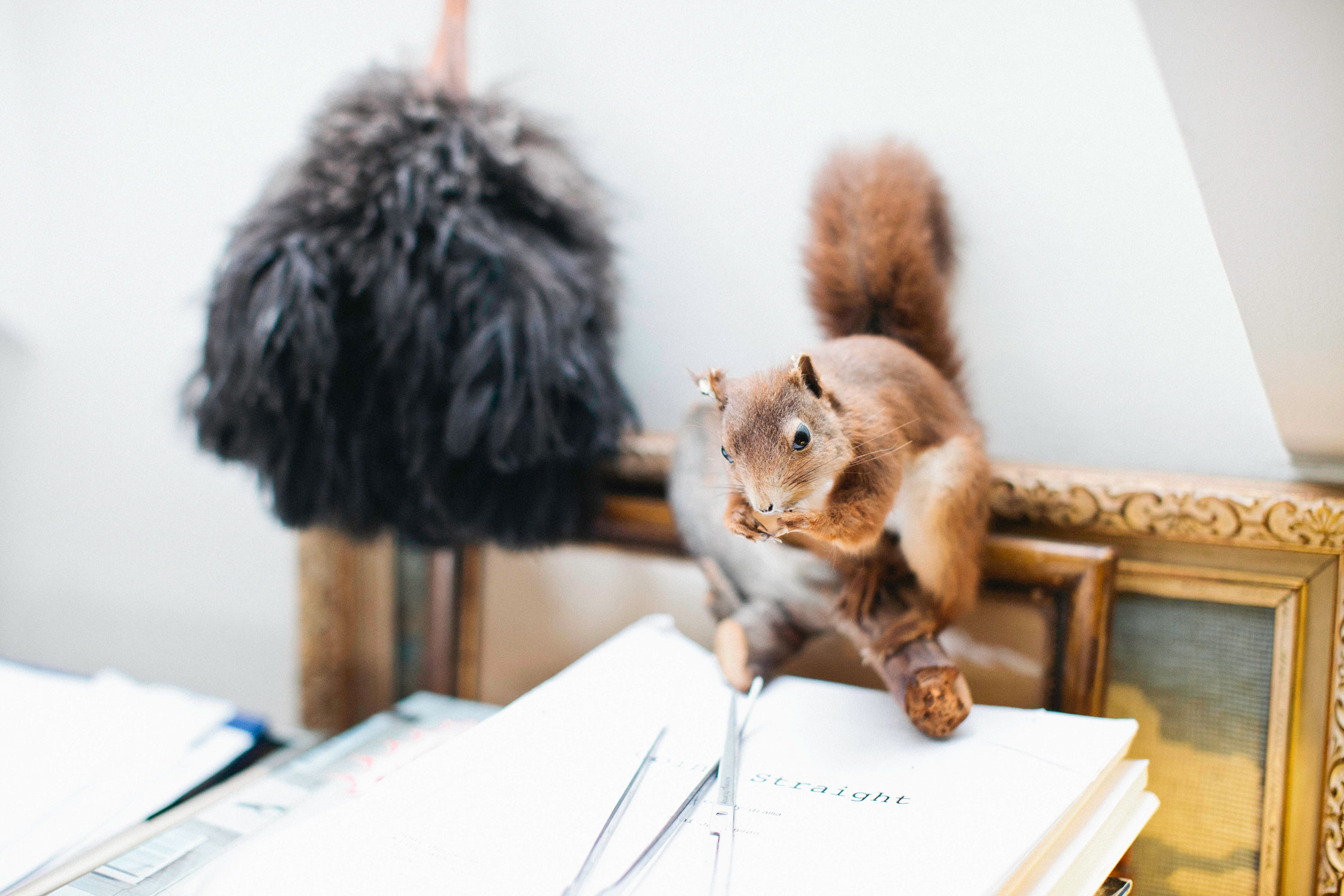
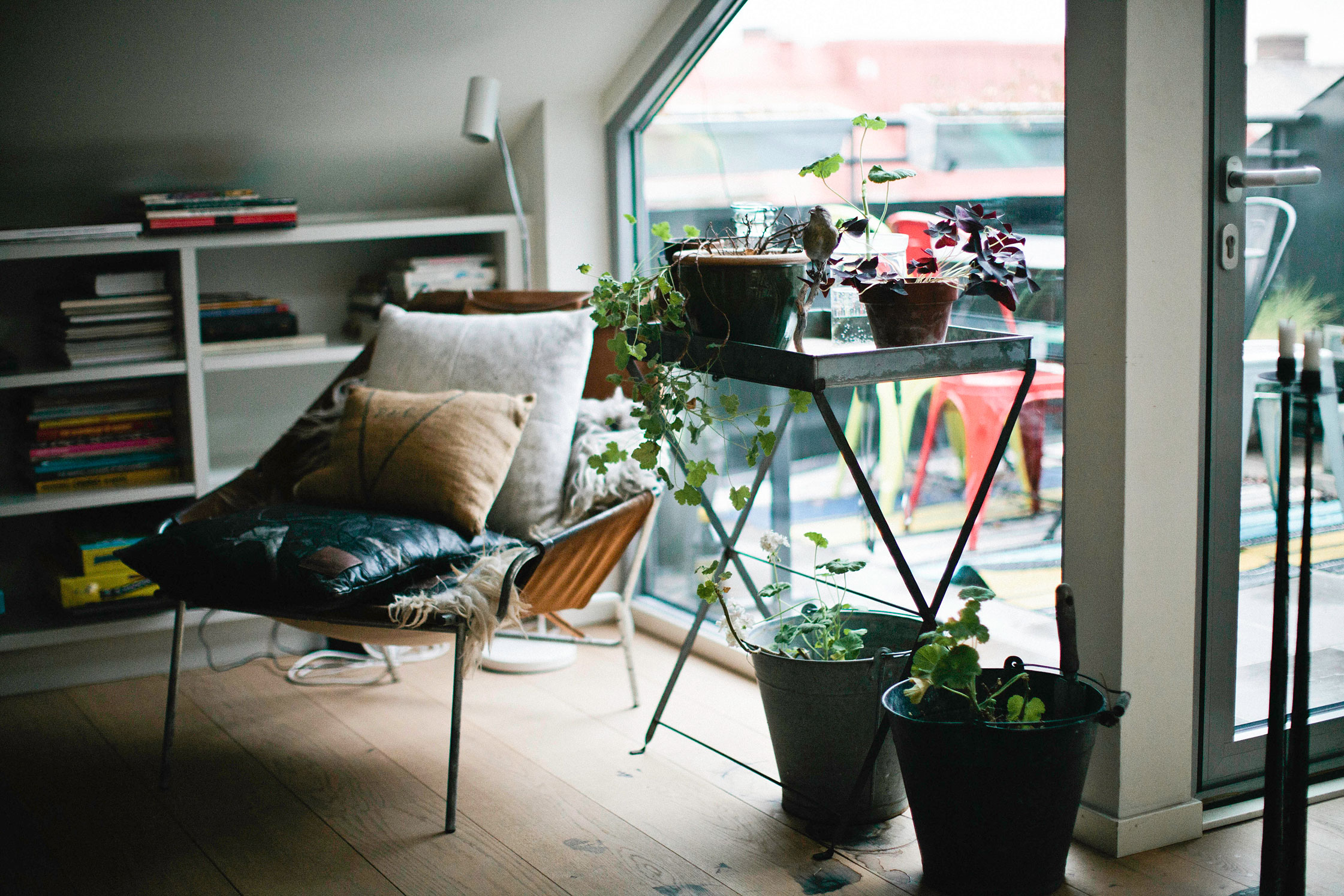
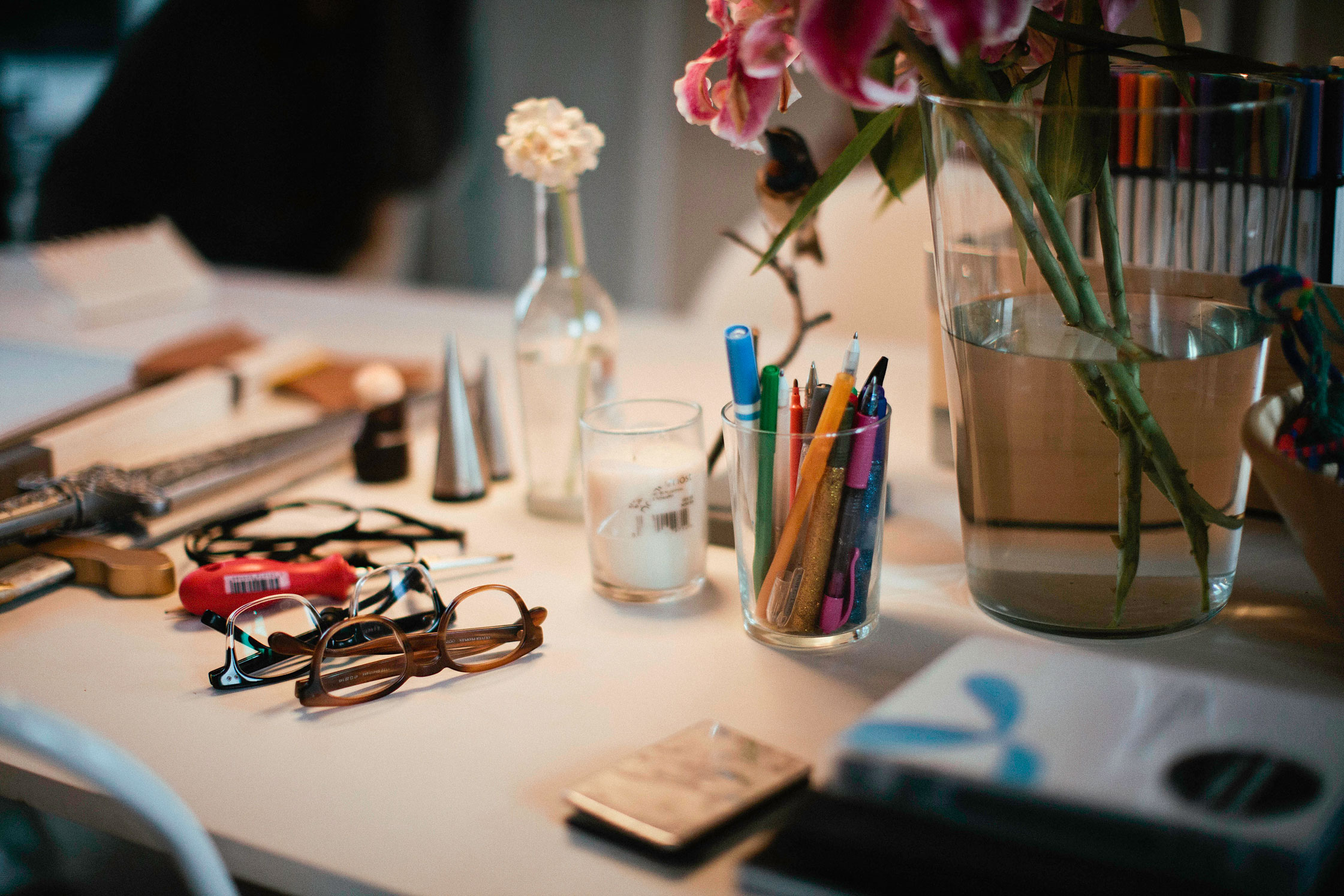
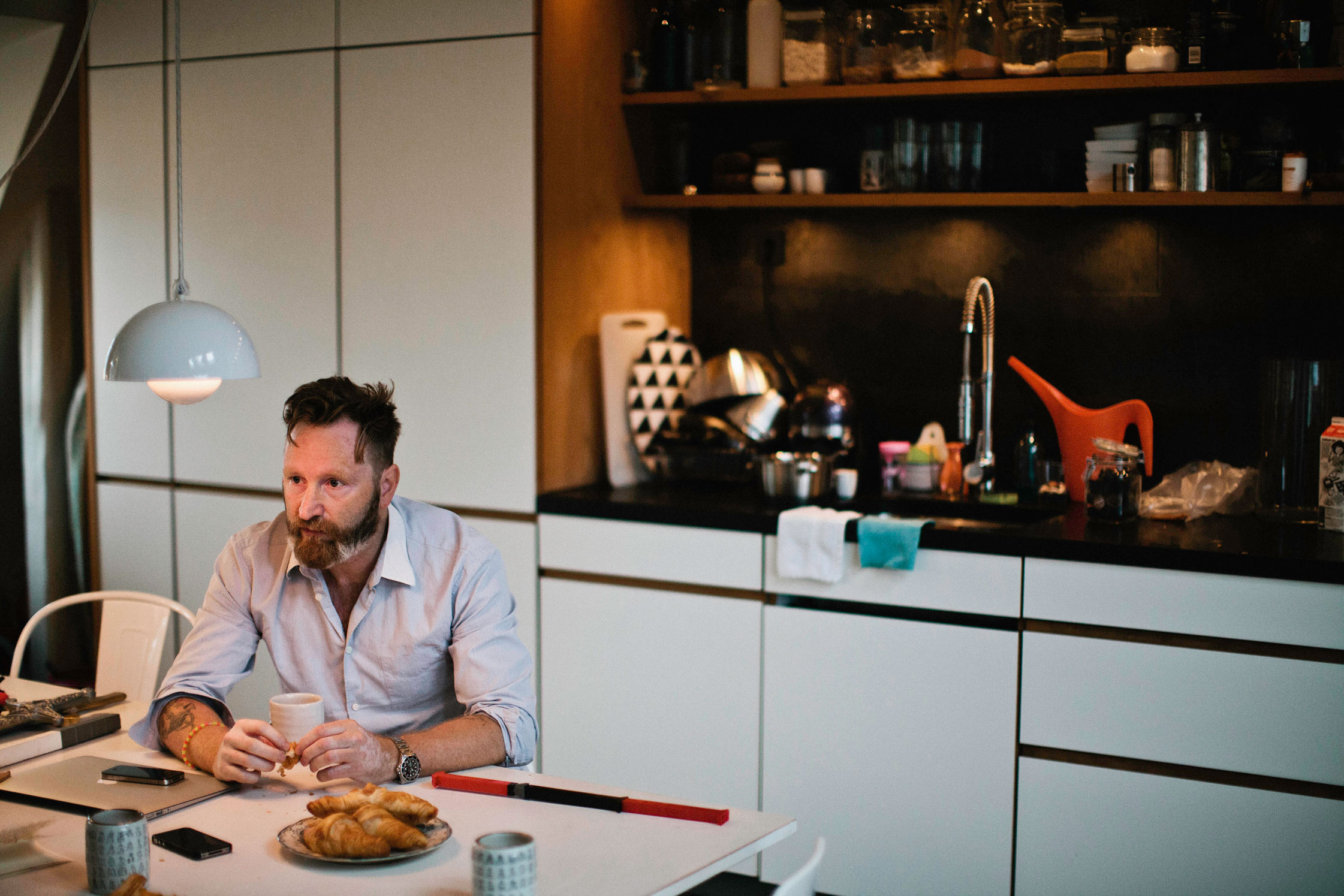
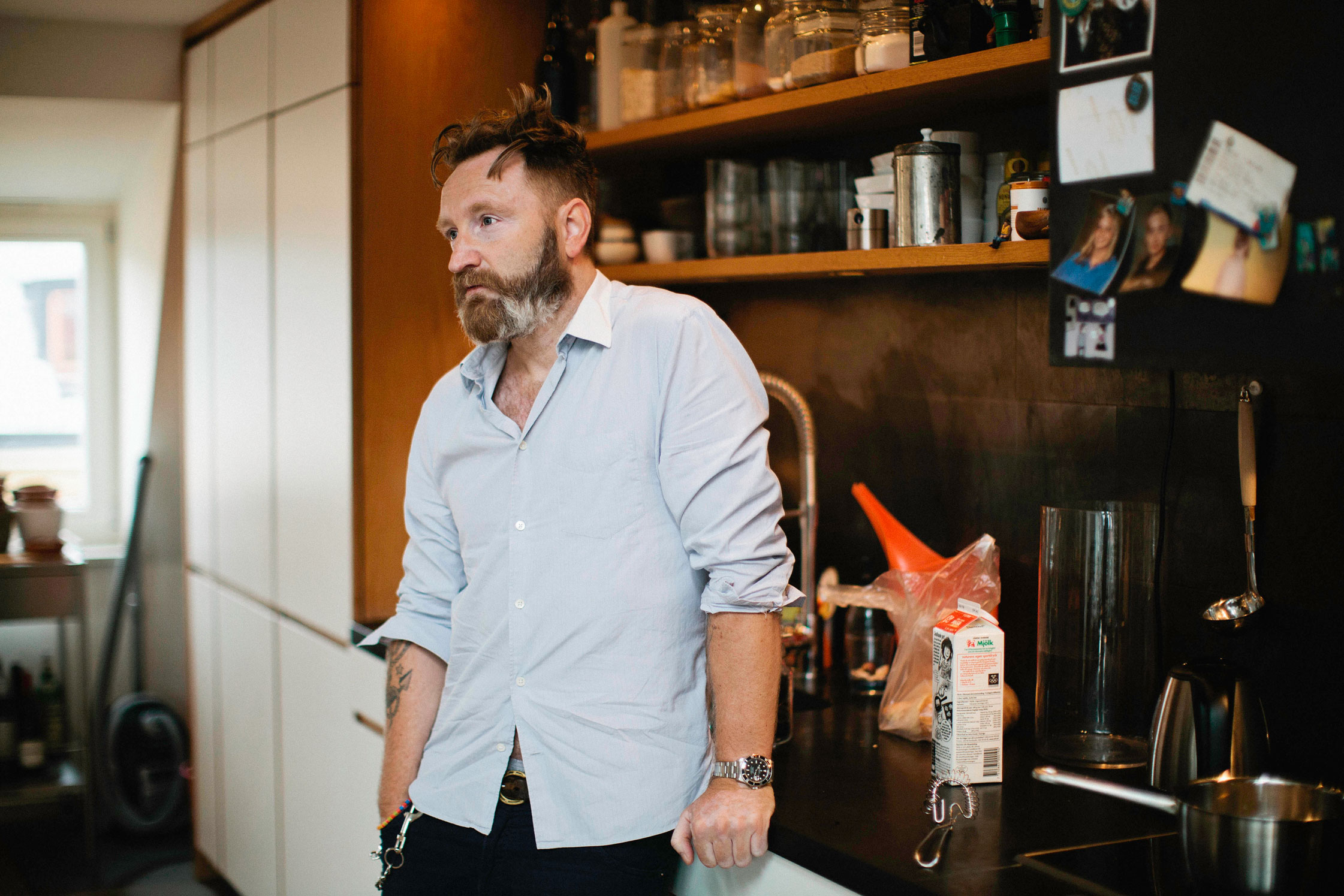
Did you grow up here in Södermalm?
Not really, I moved into town from Växjö. I studied graphic design at school and started out at Berghs School of Communications in Stockholm in the 80s.
So you came to study?
Exactly. I started off as a graphic designer and got into film by coincidence. I am a graphic designer at heart. I actually posses more talent as a graphic designer! I think I’m starting to get a place in the film business though. I am still a rookie when it comes to really big productions but I think I can navigate quite well within the film industry. After my studies I started as an assistant for a woman named Moa Eskedahl for two years. Then I started to work with Rickard Tillblad. In my opinion he is one of Sweden’s best graphic designers. We worked together for a few years until I met Jesper and Matte, who also studied at Berghs and were really talented guys.
So that’s when ACNE started to form?
Yeah. We started to hang out. ACNE had already been around in some ‘Guerilla’ kind of way since the middle of the 90s. Jesper, the guy that coined ACNE, had ACNE in his head a few years before I came along. He had produced album cover design and even CD ROM cover designs. Do you remember CD ROMS? He was also involved in the club world. It was called Acne Technology at that time, like a ‘nerd-company!’ No one knew who we were. Then we started to create things within that sphere. So this is where it all started, within the club world, the underground world, and the name ACNE started floating around within those certain circles of people. A myth was created. Then in 1996, we decided to officially launch ACNE. We all quit our jobs to start it. It was just the four of us: me, Jesper, Matte and Johnny Johansson. We got an office above a costume store in one of Stockholm’s oldest office buildings with a fantastic glass facade.
And you could afford such a fancy office?
That was the trick, people were really surprised. They thought they’d find us in some trashy basement outside of town. However, each of us had some capital and bought some cool furniture and then it all started to feel real.
Was it a strategy to be unexpected?
We were four creative guys without a strategy. We wanted to see if it was possible to start something new and have fun, beyond just another advertising agency. There were already some other agencies starting up like Tomato in London and Kessels Kramer in Amsterdam. Everything was new back then. We wanted to make a living from our own ideas and projects. You can say that was our strategy. It was really fun in the beginning. We were still young, around 28 or 29 years old and worked around the clock. That’s just what we did, we basically lived at that first office. It was a great time in my life, but I don’t want to go back. I’m living a completely different life today.
Do you reminisce about that time?
I miss the charm of it, to spend a ton of hours on a project. Now I have to pick up the kids from daycare and only have say an hour or two to solve a problem. Back then I had all the time in the world, but I was also highly ineffective. Now I can concentrate on a project in a completely different way and make a decision right away based on my experience. A little while ago there was an article in a Swedish newspaper that mentions us as pioneers within creative driven agencies, that makes me very proud and humble.
Today you travel a lot for your work, how do you juggle this as a father of two?
I used to work a lot in LA, but I had to stop traveling as much being a single father. Sometimes I even had to take my kids with me. It was actually really fun having them with me in LA.
That’s very Swedish.
You mean bringing your children along? Yes true, some people think it’s liberating to take your children along, so you have your life with you. But sometimes the client approval for an edit is at 4:30 in the afternoon and I have to step out and pick up the kids.
What’s also very Swedish is the style of humour in your work, do you agree?
Humour is very broad. I think that everything I do has humour, my work is very unpretentious. We started off as a comedy collective in film and with everything I do today I still try to get people to laugh. I enjoy crooked humor almost in a ‘Monty Python’ way and also in a cheesy ‘B-grade film’ way. And yeah, most definitely very Swedish humour. I also work with the other end of the humor spectrum. For example my commercials for Tele2 with Frank the Sheep – commercials for Cheep electricity. It’s still humor but really emotional humor. I took Frank, which is a talking sheep, and transformed him into a multi-dimensional character. I’ve now made around 30-40 Tele2 commercial films with this character. In the latest ones he travels to China to adopt a little lamb. He sings a beautiful song in church to the new lamb as he is being baptized. There isn’t a joke in that film, they’re serious but at the same time it’s humorous. It’s about a sheep. But we treat the humor very seriously.
How do you describe your creative process?
It’s not like I sit around and browse through a bunch of books, today I have so much material on my hard disk. All of my references are digitalized. It’s more a process of writing out my ideas now that I work with film. I write treatments, work through scripts and briefs that are sent out with picture references attached. Sometimes I get the chance to draw my own storyboards and that’s a lot of fun. But that takes way too much time. I have to outsource the jobs I don’t have time for now.
Is it harder to find inspiration now that your references are on two external hard drives, rather than being physical?
There is no difference whatsoever. Now I can just take a picture with my phone. Before you had to go out, get the book and scan it. Actually now it is much easier. I can organize and save all my old reference pictures in the one place.
Where do you find inspiration?
It’s very seldom that I go out to find inspiration – except when I’m traveling. Of course I think it’s cool to go to an exhibition or art gallery but I don’t really find inspiration there. I don’t work like that. For me it feels fake, but great if it works for other people. I have been building my reference library throughout my whole life. It can be anything from a comic book I read as a child to a really cool television series I saw yesterday. It’s like a soup of inspiration. Every time a new job comes in I open up my tool box and think to myself “oh for this script, I want to go in this direction” and use my pre-existing references for that specific project. There are so many things I like. I love genre based things. Commercials have such a short time span. If I was making a movie it would be a period-piece with lots of costumes.
On the topic of costumes we didn’t talk about the fashion label ACNE yet, are you part of that too?
I was definitely involved in the beginning, to a large extent. I actually recently found a bag with some of the first few jeans we produced, in my basement when I was cleaning up. We initially only produced 100 pairs to give away to clients and friends. They went quickly so we made 200 more. We sold some from that batch to local stores to see how it would go and then it all started. Then we began making t-shirts and jackets as well. We had no idea what we were doing back then. People laugh when I tell them about how Johnny and I started. I made our jeans budgets in Adobe Illustrator!
We had no money in the bank but we dared to order a whole collection for one million Swedish Krona. I don’t remember how we solved it, but it all worked out in the end. We just did it. There’s charm in that, we got things done. We could never take that risk today but back then we did. It is because of that stupidity that things got done. It was screwed up. There isn’t a sane person in the world who would do that today (laughs). And today ACNE Studios make 750 Million Swedish Krona per year. But it was very rocky in the beginning. It’s a hard industry to be the new guy in. There’s a lot of investment in it. If something goes wrong with the production of a collection you still have to pay. It’s an extremely sensitive industry and they really pushed and tried hard. So we – on the commercial side – kept making commercials to bring in money to support the clothing side of things and sent money between the different departments.
What a journey.
Yes it is a really crazy and beautiful journey that we all shared. Sometimes when I read an article or have a presentation and look at old archive pictures, that’s when I realize what we’ve done and how much fun we’ve had. I am really proud of how we made it and how we started. Even today, things just get better and better. I feel we have the potential to do so much more. We are still developing the departments we have. We have built up our portfolio of film, television, commercials, digital and games. We also have our consulting side with integrated projects on all fronts. It still feels like the sky’s the limit with what we can become.
I think it’s important to look back and see what you’ve accomplished over the years. For example last year, I said to myself “we’ve never had it better.” From making games and apps, to directing commercials and graphic design, it is still fun. It’s about combining different expertise and finding new ways to work. We’ve had the company for over 15 years now, it’s a nice feeling. Making games is also something I’ve dreamed about doing for a very long time. I’m still naive, my line of thinking is: “I love playing video games, of course I can make one…” But it’s really hard to make one, I know that now.
Tell me more about the game you made.
Well I was in charge of the concept of My Little Hero, and worked very closely with the programmer. It was fun to sketch out the design and patterns of the game. I was waiting for mom to call out that food was on the table – I was working at that level. It was magic to sit with all the character sketches. It was so far removed from film. While working with the game I became a child again. It was completely new.
Is the story about your son?
No, well it’s my son who is the model for the character, but not more than that. We called the character Billy which is my son’s name, but it’s just the name. I thought the game would sell really well and I was surprised that it didn’t. My reward was the process itself. When I’m finished with something that feeling only lasts for 24 hours. Then it’s gone and I ask myself “what next?” Of course I want it to do well commercially, but I’ve already received my own reward during the game’s conception and completion.
Where do you find this inspiration and motivation to do new things?
Now with all my experience I know exactly what I like. I’m not searching for what I like in the same way I did back then. I still need inspiration but I have my safe sources. I’ve found myself a while ago, so I’m more comfortable. When I was younger I had a lot of performance anxiety. Now I know what I like and how to finish something I am proud of. That doesn’t take away my urge or creative drive at all. What I believe is extremely important in my work, now and always. That drive, urge and hunger for creativity that I had when I used to sketch when I was young is something I still have. That feeling in my stomach is still the same. The passion is still there. The way I do things now and the way I did things 15 years ago is completely different but I still get that feeling each time I start something new. When you get older there are things that you want to spend more time on creating but you have to take care of other things that require time and effort. I wish I had more time to create.
So no time to be creative after work?
I have periods of playing video games or tinkering after my kids are asleep. It is my only free time. It’s not like I turn on the PS3 at 10:30pm and am up until 4am playing. I’m happy when I can get two hours to play. I spend a lot of time with my kids and they’re extremely appreciative. In some ways, I have discovered childhood again. Of course I have my creative tools, sketchbooks and pens here and there, but my work takes up most of my day so I don’t have a lot of time to ‘freestyle’ too much.
What’s the next thing for you?
It’s really interesting as I’m in the next phase of my own evolution. I’ve lived through my children being young and having to stay close to home. Now it’s time to travel again and meet up with colleagues around the world. I still love making commercials, the urge to shoot something is still there. The preparation, good scripts, and being behind the camera when everything falls into place is a very good feeling. But maybe something else, I don’t know what it is and that’s exciting. Let’s see.
Tomas it has been great to see inside your stunning home and hear about ACNE’s evolution. To find out more about ACNE visit their website here.
Photography: Hanna Skoog
Interview: Elin S. Kann
Translation: Philip Berger
